
- (954) 633-4878
- [email protected]

Compass Articles
- December 1, 2023
What Are the Common Types of Yacht Engines? – Engine Types Explained by Fly Yachts
The engine is the powerful heart of a motor yacht, hidden within its hull, attributing to the vessel the energy and vitality to glide across the waves. Choosing the right type of engine is crucial for performance, efficiency, and longevity. Fly Yachts, with a rich heritage in the marine industry, propels through the panorama of common yacht engine types, equipping owners with the insights to make an informed choice that resonates with the rhythm of their nautical ambitions.

Propelling with Precision: The Drive of Discovery
Inboard engines: the traditional powerhouse, the heart within the hull.
Inboard engines are known for their:
- Viability for Larger Vessels: Often chosen for bigger yachts due to their power and weight distribution advantages.
- Extended Longevity: With proper maintenance, inboard engines can have a long service life.
Outboard Engines: The Detachable Dynamos
Thrust upon the transom.
Outboard engines provide:
- Ease of Maintenance and Replacement: Being externally mounted allows easier access and servicing.
- Flexibility and Freedom: Ideal for smaller yachts or those that require shallow water navigation.
Diesel-Powered Dominance: Reliability and Range
The fuel-fired force.
Diesel engines are favored for their:
- Fuel Efficiency: Typically more fuel-efficient and offering greater range than gasoline engines.
- Torque and Durability: Known for robust torque output and sturdy construction, well-suited to long-distance cruising.
Gasoline Engines: The Responsive Ride
Flare and flair.
Gasoline engines offer:
- High Power-to-Weight Ratio: Generally lighter than diesel engines, offering a high power output.
- Speed and Agility: Ideal for yachts designed for speed and sporty handling.
Electric & Hybrid Drives: The Wave of the Future
Emissionless elegance.
The evolving option of electric and hybrid technologies present:
- Reduced Emissions: Offering a greener alternative with the potential for silent operation.
- Energy Efficiency: Hybrid systems can optimize fuel consumption by combining an electric motor with traditional propulsion.

Engine Accessories: Enhancing the Experience
The complementary companions, add-ons for augmentation.
Enhance engine performance with:
- Stabilizers: Reduce roll and improve stability, augmenting engine performance.
- Bow and Stern Thrusters: Assist in precise maneuvering and docking, particularly useful for yachts with larger engines and higher displacement.
Maintenance and Management: The Pulse of Performance
The care of the core, vigilance in vitality.
For long-term reliability, regular engine maintenance should include:
- Scheduled Service: Adhere to the manufacturer’s recommended service intervals.
- Cooling System Care: Regularly inspect and service to avoid overheating and engine damage.
The Fly Yachts Advantage: Empowered Engine Choices
Propulsion with purpose, momentum melded with mastery.
Fly Yachts provides guidance tailored to your needs with:
- Performance Assessments: Determining the ideal engine type based on the yacht’s purpose, size, and intended use.
- Expert Referrals: Connecting you with reputable marine engineers and service providers for installation and maintenance.
Venture Forth with Vehemence: Engine Selection by Fly Yachts

Setting Sail with Sovereign Selection
The aptitude of the apparatus.
Select the heart of your yacht with Fly Yachts’ expertise, ensuring every journey thrums with the beat of the most fitting propulsion.
The Journey of Journeys: Matched to the Motor
The rapport of the rumble.
With Fly Yachts, the rhythm of the ocean’s dance finds its perfect partner in the purr of the chosen engine, propelling you into the vast blue with confidence and grace.
Fly Yachts’ embrace of technological advances and classic choices provides you with a spectrum of possibilities to power your nautical narratives, ensuring seamless soirees over the seas.

Engine Types Explained by Fly Yachts
What are the main types of engines used in yachts.
The main types of yacht engines include inboard engines, outboard engines, stern drive (inboard/outboard) engines, and jet propulsion systems.
How do inboard engines differ from outboard engines?
Inboard engines are mounted inside the hull’s engine room and are connected to a propulsion system that extends through the bottom of the hull. Outboard engines are mounted externally on the stern and contain the engine, transmission, and propeller in one unit.
What are the benefits of choosing a diesel engine for a yacht?
Diesel engines are often chosen for their fuel efficiency, durability, and longer range, making them suitable for larger yachts or long-distance cruising.
Are there specific engine types that are better for sailing yachts?
Sailing yachts typically use compact diesel inboard engines due to their efficiency and lower maintenance needs, which complement the primary propulsion method – the sails.
What is a stern drive engine, and why might a yacht owner choose one?
A stern drive, or inboard/outboard engine, combines features of both inboard and outboard engines. It’s chosen for its improved maneuverability and performance, particularly in recreational or smaller yachts.
How does jet propulsion work, and in which types of yachts is it commonly found?
Jet propulsion works by drawing water in and propelling it out at high speed for thrust. It’s commonly used in performance yachts and tenders where shallow draft and high-speed capability are advantages.
Are hybrid engines an option for yachts, and what are their advantages?
Hybrid engines, which combine traditional combustion engines with electric motors, offer advantages like fuel savings, reduced emissions, and quiet operation under electric power.
What should be considered when deciding between gas and diesel engines for yachts?
Consider factors such as fuel efficiency, range, maintenance costs, the torque required for the yacht size, and whether you will be undertaking long-distance travels or short trips.
Are electric engines a viable option for yachts?
Electric engines are becoming more viable with advancements in battery technology, offering silent and emission-free cruising, ideally suited for short trips and environmentally sensitive areas.
How does Fly Yachts provide guidance on choosing the right engine for a yacht?
Fly Yachts can help assess your yachting needs, provide insights into the advantages and limitations of different engine types, and recommend engines based on performance requirements, budget, and personal preferences.
At Fly Yachts, our collection of yachts for sale presents a remarkable range of luxury yachts, each designed to deliver a top-tier seafaring experience. When you land on our homepage , you’re greeted with a straightforward overview of how our yachting services can enhance your lifestyle on the water. The journey into our company’s ethos begins on the About Us page, where we share our history and introduce the knowledgeable team behind our operations. Dreaming of a yacht tailored to your exact specifications? Our Build a Yacht feature is the perfect tool for bringing your custom yacht to life. Adventure seekers can navigate to our Charter Destinations page to discover an array of enchanting locales where they can drop anchor. Through our Compass Articles , we offer accessible insights and knowledge to support your yachting adventures. If it’s time to transition from yacht owner to seller, our Sell Your Yacht services make the process smooth and straightforward. For those looking to temporarily indulge in the yachting lifestyle, our Yachts Charter options provide a fleet of magnificent vessels ready for your next voyage. Our Aircraft for Sale page is also available for those who desire the luxury of private air travel. Up-to-date information and updates on yachting can be found on our Gulfstream News page, keeping you informed with the latest trends. Lastly, for any questions or support you may need, our Contact page provides a direct line to our team, ensuring you’re never adrift when it comes to your yachting needs.
About FLY Yachts
Unmatched Industry Knowledge, Paired With Brokers Who Care Equals Yachting You Love.
Recent Posts
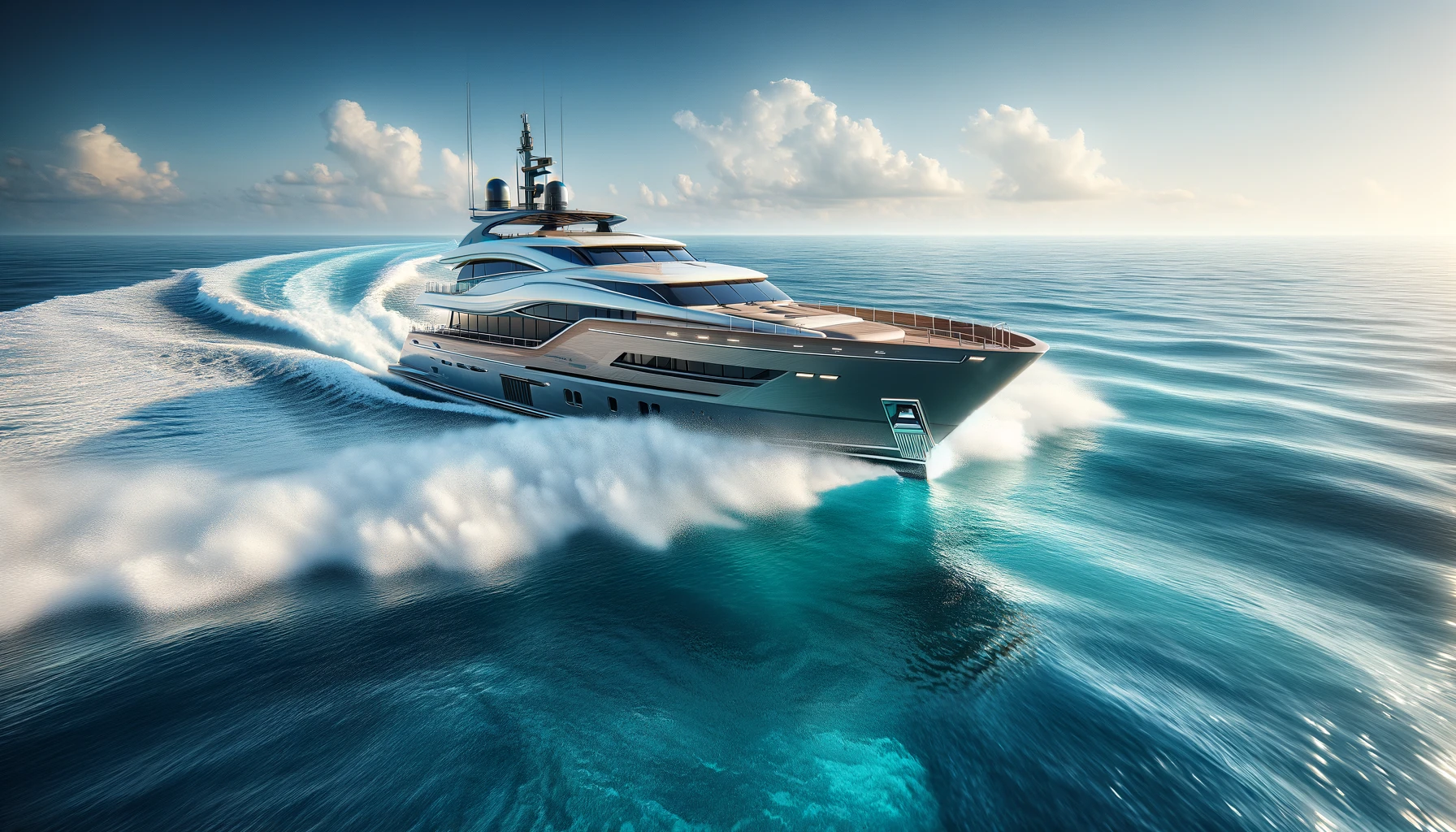
Beyond Boundaries: How to Purchase a Yacht That Defies Expectations

Crafting Your Oceanic Legacy: Tips for Buying a Custom Yacht
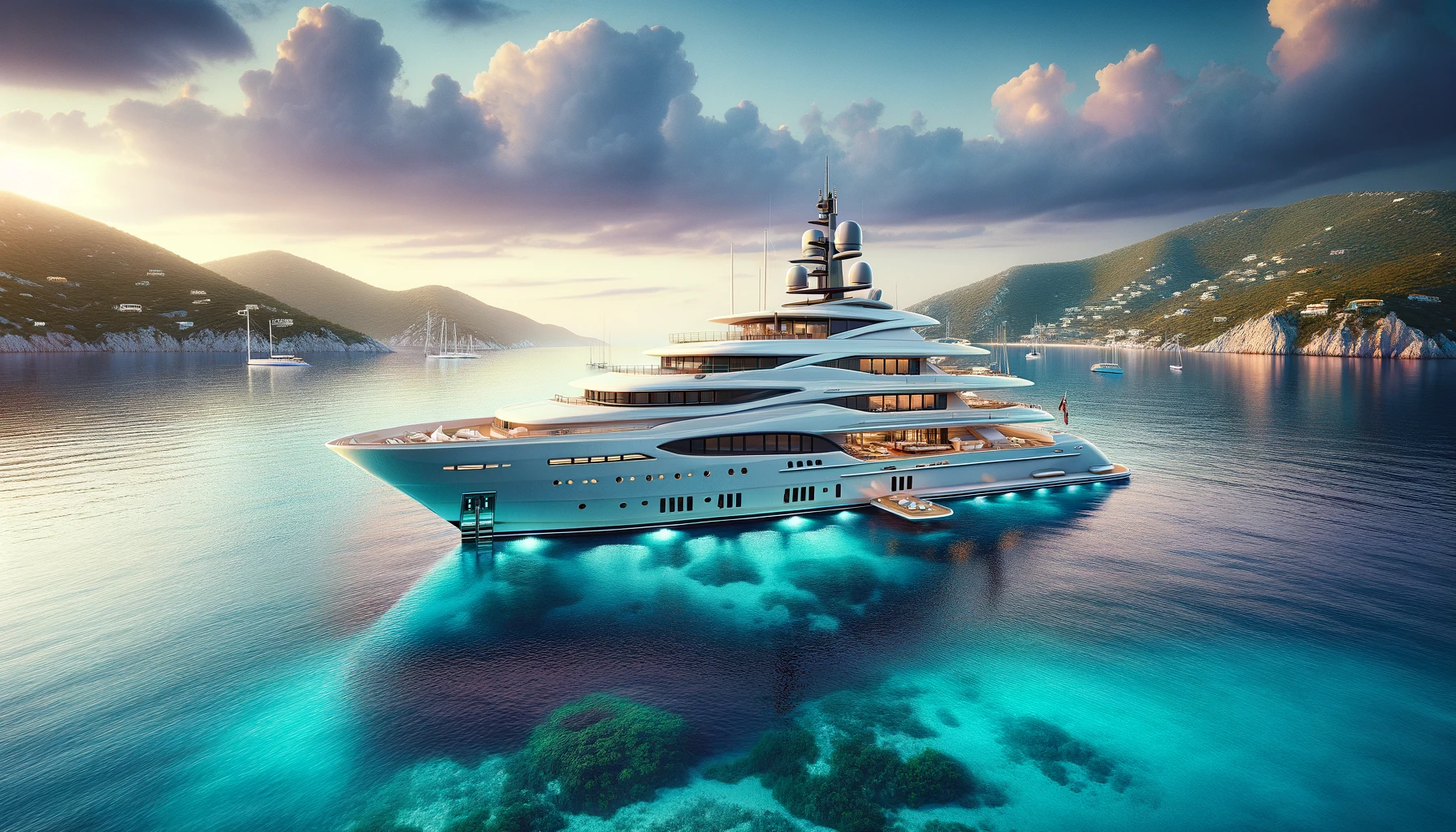
Exploring the Coolest Yacht Designs Out There: What Every Buyer Should Check Out


The Stunning Ritz Carlton EVRIMA Yacht
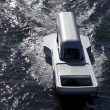
Gliding Across Tokyo’s Sumida River: The Mesmerizing Zipper Boat
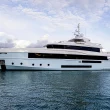
CROCUS Yacht: An 48 Meter Beauty by Admiral
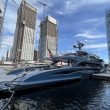
PHI Yacht – Royal Huisman’s $45 Million Superyacht
- Zuretti Interior Design
- Zuretti Interior
- Zuccon International Project
- Ziyad al Manaseer
- Zaniz Interiors. Kutayba Alghanim
- Yuriy Kosiuk
- Yuri Milner
- Yersin Yacht
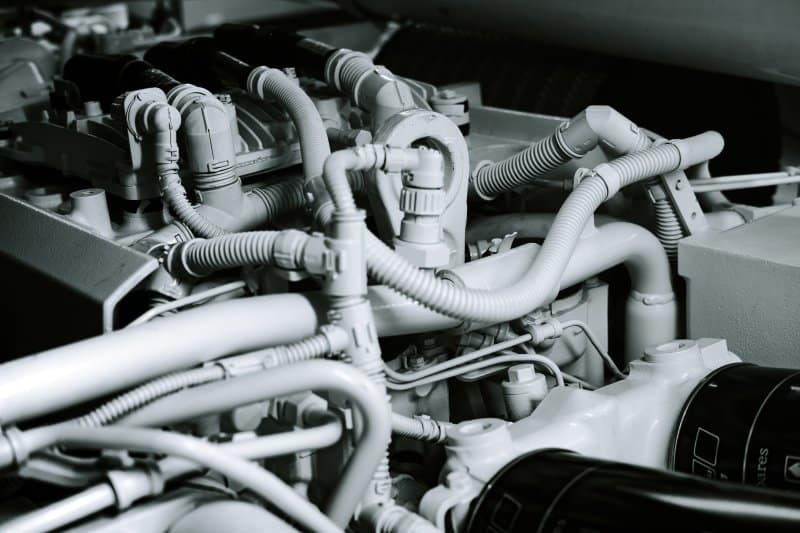
The Engines that Power Superyachts
The sight of a majestic superyacht is absolutely fascinating, but only few people actually know the different engine types that power these massive vessels.
The size of a yacht and its weight, which is given in gross tons, have considerable influence on the type of engine it will come with.
For that reason, the majority of superyachts usually do not only have one engine but actually several in most cases.
This post lists the most popular engines used in both smaller boats as well as some of the largest privately owned yachts in the world.
MTU engines
The manufacturer MTU is probably the most popular engine brand in the yachting industry, and their products can be found in vessels from all over the world.
Founded in 1909, MTU first produced engines for airships, most famously blimps, before specializing in the marine industry.
Today the engine manufacturer is also well known for its power train and locomotive, armored vehicle, haul truck engines as well as, of course, yachts.
Not only does MTU offer the best equipment for series and performance yachts, but also customized and specially manufactured engines for superyachts.
The world-renowned company advertises exceptional and powerful engines that are particularly quiet and low-vibration for maximum comfort and the best possible operating conditions.
For yachts, the MTU engine series 2000, 4000, 1163, and 8000 are the most common models and can reach a performance between 400 and 10000 KW or even 500 to 13400 HP.
The 162.5 meters (533 ft) ECLIPSE , currently the third largest yacht in the world, is equipped with not just one but four MTU 20V 1163 TB93 diesel engines allowing the giant vessel to reach top speeds of 25 knots.
Yachts That Use MTU Engines

MOONRISE Yacht: Exceptional $220 Million Superyacht
- Superyachts

NINA J Yacht – Awesome $15 Million Superyacht

ROCK.IT Yacht – Extravagant $69M Superyacht

SERENITY Yacht (42 Meters) – Luxurious $35M Superyacht
Caterpillar engines
The international brand Caterpillar is widely known for its mining vehicles, including excavators and trucks and is one of the leading manufacturers of high-quality and powerful industrial engines.
However, Caterpillar also manufactures different engines for the yacht industry and has become a top choice for mid-sized and large superyachts.
The yacht manufacturers Pride Mega Yachts, and Tourquise Yachts are known to put great trust in the engines of Caterpillar, choosing them time and time again for their most high-profile projects.
These include, for example, the ESTATEMENT with its 115 meters (377 feet) and the 77-meter (253 feet) GO, both of which are powered by Caterpillar engines.
Caterpillar offers a wide variety of yacht engines such as the series C12, C18, C32, 3512C as well as VM32C with a performance range between 500 to 8000 KW and 660 to 11000 HP.
At the moment Caterpillar manufactures 18 different models of the series mentioned above that are suitable for exclusive yachts, speedboats, and fishing vessels.
Yachts That Use Caterpillar Engines

Unveiling The Kensho Yacht: A 75-Meter Masterpiece

007 Yacht – 49.0m Luxury Superyacht

SEVEN SINS Yacht – Pinnacle $25M Superyacht

DYTAN Yacht – Stunning 74m Superyacht
MAN engines
MAN SE is a well-known machine manufacturer from Germany, established in 1758 and recently merged to form Traton SE. T
he company has made a name for itself in truck and bus manufacturing and produces different types of engines and machines.
MAN’s most famous project in the boating industry was in 1987 when they supplied a total of nine four-stroke diesel engines for the cruise ship Queen Elizabeth II, which at that time was considered the largest engine for a vessel carrying passengers.
On the water, MAN offers 12 different engines for yachts as well as fishing boats. Their popular i6 series has three different engines which have an output from 537 to 625 KW, which corresponds to 730 to 850 HP.
The V8 series also has three engines which range between 735 and 956 KW (1000 to 1300 HP).
The most powerful yacht engine series by MAN is the V12 model. With an output range of 1029 up to 1471 KW, these powerful engines provide 1400 to 2000 HP per engine.
SEMT Pielstick
The 147-meter (482 ft.) PRINCE ABDULAZIZ is one of the largest yachts in the world, relying on Pielstick engines.
She is powered by two 5,816 kW Pielstick diesel generator sets that produce an astonishing cruising speed of 18 knots, which is considerable for her size.
Since 2006, SEMT Pielstick, which originally mainly produced engines for locomotives, power plants, and naval and merchant’s vessels, has actually been part of MAN, although the brand SEMT remains.
Pielstick was originally based in France, and in addition to producing engines for superyachts, the company built power plants and locomotive engines.
Yachts That Use Pielstick Engines

ATLANTIS II Yacht – Serenity $100M Superyacht

PRINCE ABDULAZIZ Yacht – Stunning $100M Superyacht

A+ Yacht – Exclusive Haven $450 Million Superyacht
Wärtsilä engines
While companies like MAN or Caterpillar have become household names, Wärtsilä is a somewhat lesser-known engine manufacturer in the yachting industry.
The Finnish brand was founded in 1834 and has worked on very large projects like the 82-meter ALFA NERO, the 106-meter BLACK PEARL, and the 84-meter SAVANNAH.
Wärtsilä is therefore not to be underestimated, and their experience in the energy sector makes their engines extremely efficient and highly innovative.
In addition to traditional diesel and gas engines, Wärtsilä also manufactures propellers, marine control systems, and water management solutions.
The majority of their projects are, however, industrial, although it is expected that Wärtsilä will most likely work on more superyachts in the future, given their innovative approaches.
Yachts That Use Wärtsilä Engines

PELORUS Yacht – Sumptuous $250 M Superyacht

DILBAR Yacht – Glamorous $800M Superyacht

SAMAR Yacht – Luminous $100M Superyacht

DREAM Yacht – Dazzling $150 Million Superyacht
Do you have anything to add to this listing?
Love yachts join us., related posts.
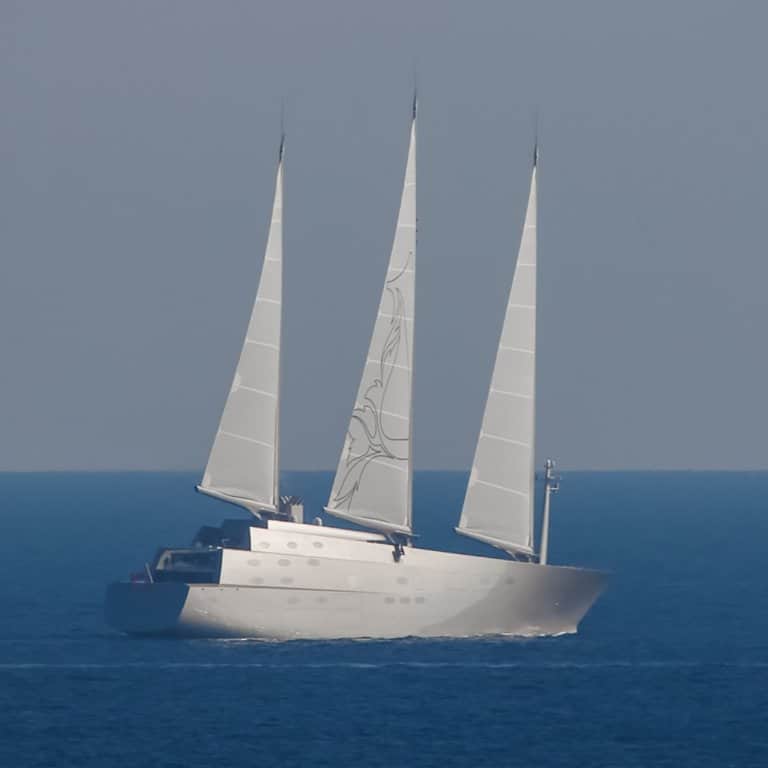
Top 10 Biggest Sailing Yachts In The World

Bananas On Boat Trips Are Bad Luck – 6 Reasons Why
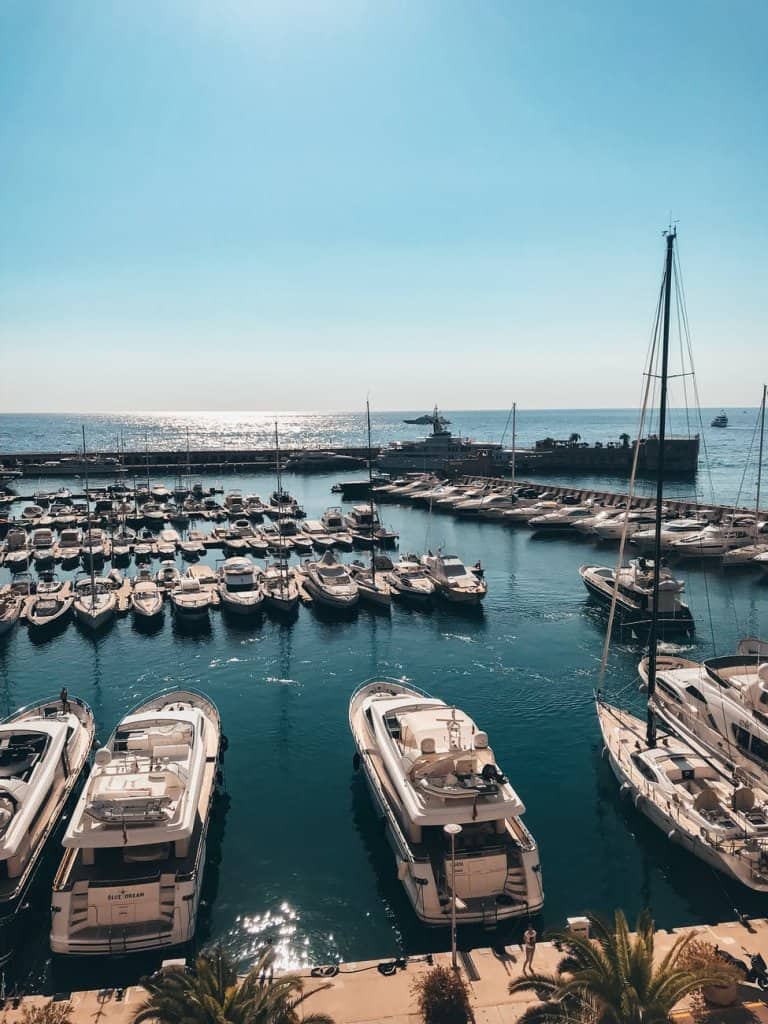
13 Awesome Superyacht Marina Destinations
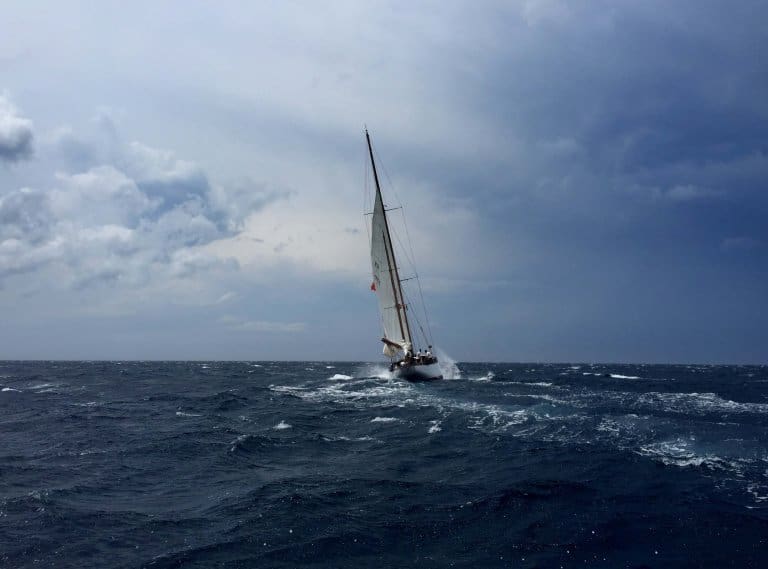
9 Sailing And Boat Superstitions

A basic overview of yacht engines

With thanks to Premier Separator Services & CONSO - Engine Parts, Maintenance & Servicing
Engines can be referred to as the beating heart of any motoryacht; responsible for getting a vessel going and keep it running through ocean waters. Yachting Pages explores the essentials of yacht engines for crew wanting to work in the engine room or for general engine enthusiasts, with help from John Warren at Premier Separator Services and Jean-Francois Conso from CONSO - Engine Parts, Maintenance & Servicing.
Search for engine service suppliers in your location on Yachting Pages.

Yacht engines: Does size matter?
As can be safely assumed, an engine for a 40ft yacht is not going to be the same as that of a 40m superyacht in terms of size, weight, power or complexity.
While engines for smaller yachts are technical in themselves, superyacht engines in particular are “extremely complex”, as John from Premier Separator Services explains, “On board a superyacht you have so many systems other than the main engine, from the auxiliary equipment and generators, to the air conditioning and sewage plant. In principle, the main difference between a yacht and superyacht engine is size, but superyachts are so much more complex and very efficient if maintained properly.”
Types of yacht engine
As Jean-Francois Conso from CONSO points out, “There are many engines ranging from six cylinder to 16 cylinder. There are also many brands, from MAN and MTU to Cummins, Deutz, Cat and Baudoin; however the most popular are MTU and Cat. These tend to be seen on board yachts ranging from 80ft to 80m long.
In terms of fuel, diesel tends to be the preference for yacht and superyacht engines and as technology has evolved, so diesel has become cleaner and engines are able to produce more power without burning more fuel.
However, diesel is not without competition, as alternative fuels such as liquid natural gas (LNG) look to compete and provide a ‘cleaner’ fuel source for the future.

Keeping your yacht engine efficient
Of course, like any engine, maintenance is absolutely essential to keep a yacht engine running smoothly at full power. Jean-Francois recommends using your engine at 80% of its full power for optimum performance, and following all maintenance recommendations from professional engine service suppliers.
Take a look at our guide on how to get the most out of a yacht engine , for further guidance and tips on the best maintenance and protection for a yacht or superyacht engine.

The engine room
Yacht engine rooms have changed dramatically over time, and aren’t necessarily the dark, dingy environments of the past. Some engine rooms are now so bright and meticulously designed, that guests on board large and luxurious superyachts are taken down to the engine room for a tour.
As yacht crew, the size of the engine room you’re working in will vary depending on the vessel and the engine’s complexity, but nevertheless, stepping in for the first time can be quite overwhelming for crew.
As John points out, it’s important to ease yourself in by first getting the lay of the land and familiarising yourself with every inch of the engine room, “Get to know your engine room, trace out all pipelines, whether that’s fuel lines, ballast lines or fresh water lines.
“Get to know each bit of equipment and if in doubt contact the manufacturer and ask for some advice; don’t be afraid to ask.”
If you’re interested in how other engine rooms are laid out on board, take a look at our yacht engines playlist on YouTube .

Getting educated with yacht engines
If you’re yacht crew looking to move into engineering, the first level qualification you’ll need is the Approved Engine Course (AEC) , known as the first level qualification, before progressing into gaining your Marine Engine Operator Licence (MEOL) and Yacht (Y4) certificate of competency.
Get more guidance on becoming a superyacht engineer with our guides on engineering training courses .
Search for engine service suppliers on Yachting Pages.
Tried & Tested

A jacket completes any crew member's uniform so it's an important garment to get right. In this Tried & Tested, Sea Design pits eight popular jackets against one another to determine which one is best for superyacht crew in 2023.
iAQUA creates high-performance, technologically advanced underwater scooters. In this Tried & Tested, a team of experienced testers have rated and reviewed the AquaDart Pro and AquaDart Nano series to reveal the stand-out iAQUA sea scooter.
In our 2022 Tried & Tested, yacht toy specialist EAMS and a group of captains and crew review a selection of the very best luxury water toys on the market. Find out which toy was crowned the winner...
MB92 Group and Pinmar, part of GYG Ltd, has partnered to launch a sustainability initiative in collaboration with the Ba...

The 2024 Sanctuary Cove International Boat Show (SCIBS) is set to be one of the most exciting yet, with nearly 100 launc...

Popular Articles
Finished reading now find your perfect supplier..
Search our industry-leading directory for over 20,000 superyacht suppliers, providers and marinas.
Chapter 1: The Basics of Your Boat
Types of boat engines.
Engines can also be broken up into different categories. Let's examine each of the three types of engines used to propel powered boats.
Remember, the boat's outboard engine does not factor into measuring its length to determine class!
Course Signup: Location
Privacy Policy
This privacy policy is intended to provide information to users of Boater's Academy's websites, and users of the services provided by Boater's Academy, about how Boater's Academy uses, stores, and protects information associated with such users. By using any of the websites or services of Boater's Academy, you represent and warrant that you have read and understood this privacy policy, and agree to its terms.
Effective Date Of Policy
The effective date of this privacy policy is 01/01/2018. Boater's Academy reserves the right, at any time and without notice, to add to, update, change, or modify this privacy policy by posting a new version on this page.
Information Collected By Boater's Academy
When you access Boater's Academy websites, Boater's Academy automatically gathers information that most web browsers automatically make available. This information may include IP addresses, Internet domain names, and types of devices and web browsers accessing Boater's Academy websites. Such information is anonymous and is not meant to personally identify you.
Boater's Academy websites also use cookies, which are files that are placed on your computer when you visit Boater's Academy websites. The purpose of cookies includes identifying you as a unique user of Boater's Academy websites and services, tailoring your experience on Boater's Academy websites, and enabling third-parties (such as Google) to optimize and serve advertisements to you.
If you do not wish to have cookies placed on your computer, you have several options, including: (a) not accessing Boater's Academy websites or using Boater's Academy services; (b) setting your web browser to refuse cookies; and (c) opting out of or customizing the use of third-party cookies through various websites operated by such third parties or by others (i.e., Google, Facebook, and Network Advertising Initiative). Please note that blocking or customizing the use of cookies may affect your experience on Boater's Academy websites or with Boater's Academy services.
If you decide to use certain features of Boater's Academy websites or services (such as ordering a product or service), you will be asked to provide certain personally identifiable information, which can include your name, phone number, email address, mailing address, credit/debit card number and expiration date, and social security number. You are under no obligation to provide such information, but refusing to do so may prevent your ability to use certain features of Boater's Academy websites or services.
How Boater's Academy Uses The Information It Collects
With respect to non-personally identifiable information automatically collected from you when you access Boater's Academy websites and information gathered through the use of cookies, Boater's Academy uses such information to: (1) help diagnose problems with our server and administer our websites; (2) track the usage of our websites so we can better understand who is using our websites and services and how they are using them; and (3) share with advertisers to help them better understand our services and the preferences of our customers.
Boater's Academy may combine certain demographic information obtained from you when you use certain features of Boater's Academy websites or services (such as registering or ordering a product or service) with site usage data to provide profiles, in aggregate form, about our users and their preferences. The aggregate, composite information may be shared with our advertisers.
The personally identifiable information you voluntarily provide to Boater's Academy when you decide to use certain features of Boater's Academy websites or services (such as registering or ordering a product or service) may be used for the following purposes: (1) contacting you regarding Boater's Academy's products or services, including those which you have ordered or requested; (2) billing you for the products or services your ordered or requested; (3) providing the information to third parties such as shipping companies, merchant account and payment gateway service providers, governmental entities, and our product and service distributors to the extent necessary to provide the products and services that you order or request; (4) providing the information to those who assist Boater's Academy with providing its products and services; (5) providing the information when required to do so by law or if necessary to protect the property or rights of Boater's Academy, third parties, or the public; (6) providing the information to a successor of Boater's Academy in the event of a merger, acquisition, bankruptcy, or sale of Boater's Academy's assets; and (7) providing the information to consumer credit reporting services, collection agencies, attorneys, and others in the event you fail to pay any amounts owed to Boater's Academy.
In disclosing your personally identifiable information, Boater's Academy will disclose only so much of the information as is necessary to provide the products and services that you request or order.
Security Of Information Provided To Boater's Academy
Boater's Academy takes security seriously and uses commercially reasonable safeguards to protect against the unauthorized access, use, modification, destruction or disclosure of any information you provide to us. However, Boater's Academy cannot guarantee that any information provided to us or obtained by us will not be accessed, hacked, disclosed, altered, or destroyed by unauthorized parties.
Children's Privacy
Boater's Academy does not solicit or knowingly collect personal information from children under the age of 13. If Boater's Academy obtains actual knowledge that it has collected personal information from a child under the age of 13, we will delete such information from our database. Because Boater's Academy does not collect personal information from children under the age of 13, we have no such information to use or disclose to third parties.
Parents of minors of any age may contact our Privacy Coordinator at the mailing address or e-mail address indicated below in order to: (1) access personally identifiable information Boater's Academy has collected from their child; (2) correct or modify such information; (3) request to have such information deleted; and (4) request that we no longer collect or maintain such information.
How To Request Changes To The Personally Identifiable Information We Collect
You can review and request changes to the personally identifiable information that Boater's Academy has collected from you by contacting our Privacy Coordinator at the mailing address or e-mail address indicated below.
Do-Not-Track Disclosure
Boater's Academy does not respond to "Do Not Track" signals sent by browsers.
Consent To Receive Communications
By providing your name, email, mailing address, and/or phone number to Boater's Academy, you consent to receive electronic and other communications from Boater's Academy. You may opt out of receiving electronic communications at any time by: (a) following the unsubscribe instructions contained in each communication; or (b) by contacting our Privacy Coordinator at the mailing address or e-mail address indicated below.
Third-Party Websites
Boater's Academy is not responsible for the content of websites operated by third parties to which it may provide links on Boater's Academy's websites or for the websites of advertisers. Such third parties and advertisers may also have privacy policies that are different from this privacy policy. Therefore, you should inform yourself of the privacy policies and practices of any websites of third parties or advertisers.
Contacting Us
If you have any questions about this privacy policy, Boater's Academy websites, or Boater's Academy products and services, please contact our Privacy Coordinator at the mailing address or e-mail address indicated below:
Boater's Academy Attn: Privacy Coordinator P.O. Box 5143 Virginia Beach, VA 23471 [email protected]
Terms of Use
Introduction
Welcome to Boater's Academy. This website is owned and operated by enLearned LLC. By visiting our website and accessing the information, resources, services, products, and tools we provide, you understand and agree to accept and adhere to the following terms and conditions as stated in this policy (the "User Agreement").
This User Agreement is in effect as of 01/01/2018.
We reserve the right to change this User Agreement from time to time without notice. You acknowledge and agree that it is your responsibility to review this User Agreement periodically to familiarize yourself with any modifications. Your continued use of this site after such modifications will constitute acknowledgment and agreement of the modified terms and conditions.
Responsible Use and Conduct
By visiting our website and accessing the information, resources, services, products, and tools we provide for you, either directly or indirectly (the "Resources"), you agree to use the Resources only for the purposes intended as permitted by (a) the terms of this User Agreement; and (b) applicable laws, regulations and generally accepted online practices and guidelines.
You agree that:
a. In order to access our Resources, you may be required to provide certain information about yourself (such as identification, contact details, payment information, and other information) as part of the registration process, or as part of your ability to use the Resources. You agree that any information you provide will be accurate, correct, and up to date.
b. You are responsible for maintaining the confidentiality of any login information associated with any account you use to access our Resources. Accordingly, you are responsible for all activities that occur under your account(s).
c. Accessing (or attempting to access) any of our Resources by any means other than through the means we provide, is strictly prohibited. You specifically agree not to access (or attempt to access) any of our Resources through any illegal, automated, unethical or unconventional means.
d. Engaging in any activity that disrupts or interferes with our Resources, including the servers and/or networks to which our Resources are located or connected, is strictly prohibited.
e. Attempting to copy, duplicate, reproduce, sell, trade, or resell our Resources is strictly prohibited.
f. You are solely responsible any consequences, losses, or damages that we may directly or indirectly incur or suffer due to any unauthorized activities conducted by you and you may incur criminal or civil liability for such unauthorized activities.
g. We may provide various open communication tools on our website, including but not limited to blog comments, blog posts, public chat, forums, message boards, newsgroups, product ratings and reviews, and various social media services. We do not always pre-screen or monitor the content posted by users of these various communication tools, which means that if you choose to use these tools to submit any type of content to our website, then it is your personal responsibility to use these tools in a legal, responsible and ethical manner. By posting information or otherwise using any open communication tools as mentioned, you agree that you will not upload, post, share, or otherwise distribute any content that:
i. Is illegal, threatening, defamatory, abusive, harassing, degrading, intimidating, fraudulent, deceptive, invasive, racist, or contains any type of suggestive, inappropriate, or explicit language;
ii. Infringes on any trademark, patent, trade secret, copyright, or other proprietary right of any person or entity;
iii. Contains any type of unauthorized or unsolicited advertising;
iv. Impersonates any person or entity, including any Boater's Academy employees or representatives.
We have the right at our sole discretion to remove any content that, we feel in our judgment does not comply with this User Agreement, along with any content that we feel is otherwise offensive, harmful, objectionable, inaccurate, or violates any copyrights or trademarks. We are not responsible for any delay or failure in removing such content. If you post content that we choose to remove, you hereby consent to such removal, and waive any claim against us for such removal.
h. We do not assume any liability for any content posted by you or any other third party users of our website. However, any content posted by you using any open communication tools on our website, provided that it doesn't violate or infringe on any third party copyrights or trademarks, becomes the property of enLearned LLC, and as such, gives us a perpetual, irrevocable, worldwide, royalty-free, exclusive license to reproduce, modify, adapt, translate, publish, publicly display and/or distribute as we see fit. The foregoing only applies to content posted via open communication tools, and does not apply to information that is provided as part of the registration process as part of your use of the Resources.
i. You agree to indemnify and hold harmless enLearned LLC, Boater's Academy, their parent company/companies and affiliates, and their directors, officers, managers, employees, agents, successors, assigns, and licensors (collectively, the "enLearned LLC Parties"), from and against all losses, expenses, damages and costs, including reasonable attorneys' fees, resulting from any violation of this User Agreement or the failure to fulfill any obligations relating to your account incurred by you or any other person using your account. We reserve the right to take over the exclusive defense of any claim for which we are entitled to indemnification under this User Agreement. In such event, you shall provide us with such cooperation as is reasonably requested by us.
Limitation of Warranties
The enLearned LLC Parties expressly disclaim any and all warranties, express or implied, regarding the Resources, arising by operation of law or otherwise, including without limitation any and all implied warranties of merchantability, quality, accuracy, fitness for a particular purpose, non-infringement, no encumbrance, or title, in addition to any warranties arising from a course of dealing, usage, or trade practice.
The Resources are provided with all faults, and the entire risk as to satisfactory quality, performance, accuracy, and effort is with the user.
The enLearned LLC Parties do not warrant that the Resources will fulfill any of your particular purposes or needs, or that the operation or use of the Resources will be uninterrupted or error-free. The enLearned LLC Parties disclaim all implied liability for damages arising out of the furnishing of the Resources pursuant to this User Agreement, including without limitation, mistakes, omissions, interruptions, delays, tortious conduct, errors, representations, or other defects arising out of the failure to the furnish the Resources, whether caused by acts of commission or omission, or any other damage occurring.
Limitation of Liability
In conjunction with the Limitation of Warranties as explained above, you expressly understand and agree that your potential recovery for any claim against the enLearned LLC Parties arising from or relating to the Resources or this User Agreement shall be limited to the amount you paid, if any, for use of products and/or services. The enLearned LLC Parties will not be liable for any direct, indirect, incidental, consequential or exemplary loss or damages which may be incurred by you as a result of using the Resources, or as a result of any changes, data loss or corruption, cancellation, loss of access, or downtime.
Copyrights, Trademarks, and License
Subject to your compliance with this User Agreement, the enLearned LLC Parties grant you a non-exclusive, non-sublicensable, revocable as stated in this User Agreement, non-transferable license to access the Boater's Academy websites, and to use the Resources. The Resources, including any portion of Boater's Academy websites, may not be reproduced, duplicated, copied, modified, sold, resold, distributed, transmitted, or otherwise exploited for any commercial purpose without the prior, express written consent of the enLearned LLC Parties. All rights not expressly granted in this User Agreement are reserved by the enLearned LLC Parties. Without limitation, this User Agreement grants you no rights to the intellectual property of the enLearned LLC Parties or any other party, except as expressly stated in this User Agreement. The license granted in this section is conditioned on your compliance with this User Agreement. Your rights under this section will immediately terminate if you breach, actually or potentially, in the sole judgment of the enLearned LLC Parties, any provision of this User Agreement.
Termination of Use
You agree that we may, at our sole discretion, suspend or terminate your access to all or part of our website and Resources with or without notice and for any reason, including, without limitation, breach of this User Agreement. Any suspected illegal, fraudulent or abusive activity may be grounds for terminating your relationship with Boater's Academy and may be referred to appropriate law enforcement authorities. Upon suspension or termination, your right to use the Resources we provide will immediately cease, and we reserve the right to remove or delete any information that you may have on file with us, including any account or login information.
By using or accessing Boater's Academy websites and the Resources, you represent and warrant that you have read and understood the Privacy Policy, which is incorporated by reference into this User Agreement, and agree to be bound by its terms. The Privacy Policy is available at http://boatersacademy.com/index#privacy .
Dispute Resolution, Governing Law, Attorneys' Fees
This User Agreement shall be governed and construed in accordance with the laws of the Commonwealth of Virginia without regard to its conflict of law principles.
Any and all claims, actions, demands, causes of action, and other proceedings ("Claim" or "Claims") involving you and any of the enLearned LLC Parties arising from or relating to the Resources or this User Agreement shall be heard in a court or courts of competent jurisdiction in Virginia Beach, Virginia. You hereby agree to personal jurisdiction by such courts, and waive any jurisdictional, venue, or inconvenient forum objections to such courts.
You agree that any Claim you bring against any of the enLearned LLC Parties will only be in your individual capacity and not as a plaintiff or class member in any purported class or representative proceeding.
If any of the enLearned LLC Parties initiates a Claim against you arising from or relating to the Resources or this User Agreement, the enLearned LLC Parties will be entitled to recover from you their reasonable costs and attorneys' fees incurred as a result of such Claim. If you initiate a Claim against any of the enLearned LLC Parties arising from or relating to the Resources or this User Agreement, and any of the enLearned LLC Parties prevail on such Claim, the enLearned LLC Parties will be entitled to recover from you their reasonable costs and attorneys' fees incurred as a result of such Claim.
REFUND POLICY
Refunds will only be issued in the event that you are unable to access the Resources through no fault of your own (i.e., due to an outage or other non-functionality of Boater's Academy websites) for a period forty-eight (48) hours commencing with the time that you register and pay for access to the Resources. No refunds will be issued once you receive a Certificate of Completion.
CONTACT INFORMATION
If you have any questions or comments about this User Agreement, you can contact us at:
Boater's Academy P.O. Box 5143 Virginia Beach, VA 23471 [email protected]
Your browser is out-of-date! You must upgrade to a different browser to experience this site.
All Chapters
- Boating Terminology
- Boat Hull Types & Designs
Boat Engine Types Explained
Boat Size Classifications
- Boat Capacity
- Hull Identification Numbers
- Boat Registration & Titling
- Life Jacket Types & Designs
- Children's Life Jacket Recommendations & Requirements
- PFD Rules & Requirements
- Life Jacket Fitting & Care Guidelines
- Inflatable PFD Types & Tip
- Boat Fire Extinguishers
- Boat Backfire Flame Arrestor
- Boat Ventilation Systems
- Boat Navigation Light Types & Requirements
- Unpowered Boat Navigation Lights
- Visual Distress Signals
- Marine Distress Signals
- Weather Conditions
- Small Craft Advisory
- Boat Maintenance Tips
- Towing & Trailering
- Launching & Retrieving
- Pre-departure Checklist
- Rendering Assistance
- Capsizing/Falls Overboard
- Cold Water Immersion
- Fire Prevention
- Running Aground Prevention
- Accident Reports
This site requires JavaScript. Your browser either doesn’t support JavaScript or you have it turned off.
For this page to function correctly, please enable JavaScript and then refresh the page.
Engine Types
Now let's look at the three types of engines you'll find on powered boats: outboard, inboard and stern drive engines.
What is an Outboard Engine?
This is an outboard engine. Outboard engines are mounted on the transom of the boat, outside of the boat's hull, which is why they're called "outboards".
Outboard engines are used to both power and steer the boat. To steer an outboard you need to move the entire engine. On smaller boats, this is often done using a hand tiller, while on larger outboards a steering wheel adjusts the direction of the engine.
What is an Inboard Engine?
Inboard engines are located inside the boat's hull. Inboard engines are four-stroke automotive engines that have been modified for use on the water. These engines power a drive shaft that is connected to a propeller.
Unlike an outboard, an inboard engine does not also steer the boat. Instead, inboards have a rudder or rudders that are located behind the propeller and controlled by a steering wheel.
What is a Stern Drive Engine?
The last type of engine is the stern drive, which is sometimes called an "inboard-outboard" because it shares features of both types of engines. Similar to inboards, stern drive engines use a four-stroke automotive engine mounted on the inside of the hull to power the boat.
Like an outboard, there is a drive unit used to steer the boat. To steer a stern drive, turn the steering wheel, which then turns the drive unit, and determines the direction of the boat.
What is a Jet Drive Engine?
A Jet Drive engine uses water to propel and steer the boat. Water enters in through an intake on the bottom of the boat and is accelerated through the jet drive unit at the transom, thrusting the boat forward.
Steering is achieved by changing the direction of the stream of water as it leaves the jet unit. REMINDER - Because steering is dependent on the water jet, Jet Drive engines will lose some steering control at low speeds.
Boat Hull Types

For inquiries, details and instructions, please see details here .

The Basics of Marine Engines: 4 Different Types
What are the different types of marine engines.
Marine engines are the lifeblood of boats, giving them the propulsion needed to go through the immense distances of oceans, rivers, and lakes. These engines exist in an array of kinds, all of which were created to meet the needs of diverse applications and vessel types. Outboard, inboard, sterndrive, and jet drive are the four types of marine engines that will be covered in this article.
Multico Prime Power, Inc. (MPPI), a leading heavy equipment supplier in the Philippines , understand the essential roles of these engines and would like to help boaters choose the best marine engine for their aquatic excursions by having a thorough awareness of each type’s distinct features and uses.
The most popular kind of marine engines are outboard motors. These engines provide a combination of power and portability. You can usually find this mounted on the stern (back) of the boat.
An outboard engine is a self-contained unit that consists of the engine, gearbox, and propeller. This design makes it simple to move, tilt, and remove. Small to medium-sized boats with outboard motors are especially common and ideal for boating in shallow seas. They are widely used in fishing boats, leisure boats, and smaller watercraft due to their adaptability and low maintenance needs.

Longevity, fuel economy, and power production are all excellent features of inboard engines. The placement of the motor inside the hull has various benefits, including enhanced stability through better weight distribution and decreased noise and vibration.
For those looking for dependable, high-performance propulsion for larger watercraft, inboard engines are the preferred choice.
Sterndrive engines, often known as inboard/outboard (I/O) engines, offer a special blend of power and maneuverability. They are mounted inside the boat’s hull, much like inboard engines. The propulsion system, which resembles an outboard engine, extends outside the hull. The drive unit for sterndrive engines consists of a drive engine attached to a drive unit with a gearbox and a propeller.
Compared to conventional inboard engines, this layout offers increased maneuverability and improved performance. In sport boats, cruisers, and high-performance watercraft where agility, power, and effective control are sought, sterndrive engines are popular.

These extremely agile engines are excellent for navigation in shallow water. Jet drives reduce the possibility of propeller damage by doing away with the requirement for one. They are extensively used in riverboats, PWCs (Personal Watercrafts), and other boats that need to be nimble and operate in confined spaces.
Factors to Consider When Choosing an Engine for Your Boat:
To ensure the best fit for your unique demands, numerous aspects should be taken into account when choosing various types of marine engines. These three essential things affect your boats.
Power Requirements
Considering your boat’s size, weight, and intended use will help you determine its power needs. Think about things like the boat’s top speed, acceleration, and the number of people or things it will carry. Choosing an engine with enough horsepower and torque guarantees top performance and effectiveness.
Analyze the fuel efficiency of various engine choices. Operating expenses and range can be greatly impacted by fuel usage. In order to make travels farther and save money overall, look for engines that have outstanding fuel efficiency without compromising power.
Maintenance and Service
Take into account the engine’s accessibility to service support and ease of maintenance. To maintain longevity and dependability, routine maintenance is essential. Verify the manufacturer’s track record for dependability, the accessibility of service facilities or professionals in your area, and the availability of replacement parts.
Key Takeaway
Selecting the most suitable marine engine is imperative for the boat’s best performance and safety. Marine engines are available from Multico Prime Power, Inc., a reputable heavy equipment supplier in the Philippines.
Outboard, inboard, sterndrive, and jet drives are the four types of marine engines, and each offers special features and benefits to meet various boating requirements. Boaters may make wise purchase decisions if they are aware of the benefits and value of each type and take into account elements like the amount of power needed, fuel efficiency, and maintenance.
When you set out on your aquatic adventures, smooth sailing is waiting for you with the variety of marine engines from Multico Prime Power, Inc. To learn more about our selection of marine engines and to set sail with confidence, get in touch with MPPI today.
welcome to Asia's Equipment Specialist
Search here, popular blog posts.

What Materials Are Used for Road Construction?
What are the materials used in […]

The Different Types of Rock You Can Utilize on the Construction Site
What are the different rock types […]

Tips When Buying a Generator Set from the Philippines
What are things you need to […]

A Simple Guide to Operating a Road Roller
How do you operate a road […]
Copyright © 2024 @ Multico Prime Power Inc. SEO by SEO-HACKER . Optimized and Maintained by Sean Si
Visit our socials:
30 Types of Marine Diesel Engines Explained
Introduction.
In this article, we will take a deep dive into the different types of marine diesel engines and understand the differences between them.
What is a marine diesel engine?
A marine diesel engine is a type of reciprocating internal combustion engine that runs on either diesel or dual fuel. It is bulkier and more complex than a petrol engine but offers higher operational efficiency.
The diesel engine, named after Rudolf Diesel , creates power by adding fuel to high temperature compressed air. The resulting controlled explosion powers the crankshaft through linkages. This power can then be used in many ways such as to rotate motors, propellers and in alternators to create electricity.
Diesel engines have the advantage of being safer and more affordable as diesel is cheaper than other fuels while being less explosive in nature. It also provides greater energy per unit allowing for better mileages or energy extraction per unit.
If you want to learn more about the parts in a marine engine, please click the following link: Parts of a Marine Engine .

Types of marine diesel engines
The industry has been working on improving the diesel engine since its invention in the early 19th century. Today, they are available in many shapes and forms. In this section, we classify the different types of marine diesel engines using their various specifications to understand the difference between them. We will explain the different types of marine diesel engines based on the following aspects:
Type of use
Number of strokes, single-acting or double-acting, type of ignition, single or multi-cylinder, piston type, arrangement pattern of the cylinders, charging method.
- Unidirectional or reversible
Operating cycle
Type of fuel.
A marine diesel engine is put to different uses onboard. Broadly, they can be used in the following two manners:
Marine propulsion engine
When a marine diesel engine is used to turn the propeller and move the ship, it becomes a marine propulsion engine and is popularly known as the main engine. The engine can be run at various speeds as per need.
Diesel generator
A marine diesel engine is also coupled to an alternator and used to generate electric power onboard. There is usually more than one of these onboard and multiple generators may be put into use during critical operations. Such diesel generators are also known as auxiliary engines.

We define a stroke as the travel of the piston from one end of the cylinder to the other end. Engine cylinder operations such as induction, compression, combustion (power stroke) and exhaust gas removal occur with the help of piston strokes. Based on the number of strokes it takes to complete one power stroke, an engine is classified as:
Two-stroke engine
In a two-stroke engine, a power stroke occurs every two strokes or one revolution of the engine crankshaft. The four operations are completed within one revolution. As a result, two-stroke engines provide a higher power-to-weight ratio, greater stability, simpler construction and are more compact compared to a four-stroke marine diesel engine.
Four-stroke engine
A four-stroke engine needs two complete revolutions of the crankshaft for one power stroke. The four aforementioned cylinder operations occur in four separate strokes in this type of engine.
Due to the fewer power strokes per revolution, these engines are more fuel efficient as the fuel has more time for complete combustion. It also requires less lubrication and is generally more durable than a two-stroke engine. All these qualities make four-stroke engines a more eco-friendly alternative.
Reciprocating-type engines are further classified into single-acting and double-acting cylinder engines. In single-acting engines, power stroke occurs on one side of the piston, but it occurs on both sides in a double-acting engine.
There are two combustion spaces and a double piston is used to seal both of them. Power stroke takes place on the upward as well as downward stroke. In the case of a two-stroke double-acting engine, there are two power strokes per crankshaft revolution. Double-acting engines are not as popular as their counterpart as the lower combustion space can be difficult to seal.
A double-acting engine is different from an opposed-piston engine in which there is only one combustion space and two pistons on either side of it.
Compression-ignition
Diesel engines ignite fuel by spraying diesel at the end of the compression stroke. The compression stroke increases the temperature of fresh air and such elevated temperatures cause the diesel to self-ignite and execute the combustion or power stroke. As a result, diesel engines do not require an external mechanism to initiate combustion.
Spark-ignition
The spark ignition engine is a type of internal combustion engine that has spark plugs fitted into the combustion space. Towards the end of the compression stroke, a spark ignites the air-fuel mixture and starts the power stroke. This method is for fuels other than diesel such as petrol, CNG, LPG, ethanol, hydrogen and so on.
Marine diesel engines are available as single and multi-cylinder engines. As the name suggests, a single cylinder engine has only one combustion cylinder that produces power. We use them in simpler applications such as boat engines under 50 HP.
Single cylinder engines are easier to cool compared to multi-cylinder engines because of the increased airflow around the cylinder.

Multi-cylinder engines have more than one cylinder. Multiple cylinders reduce the uneven load on the crankshaft while also requiring a smaller flywheel. They can generate higher amounts of power and have a greater number of parts compared to a single-cylinder engine.
Marine diesel engines are available in many different piston configurations but the most popular ones among these are the cross-head and the trunk piston. Let us understand each of them.
In the crosshead engine, an extra part known as the crosshead fits between the piston rod and the connecting rod. The crosshead is especially useful in engines with long strokes and small bores as it eliminates the sideward motion of the piston rod and also the sideward thrust on the cylinder liner.
Crosshead assembly is also preferred for slow-speed engines as it allows the engine to develop greater power at low rotational speeds as the stroke can be increased to increase combustion capacity. A crosshead also prevents the contamination of the crankcase oil reducing the total cost of lubricants compared to a trunk piston engine. Generally, crossheads are a part of main engines onboard ships.
Trunk piston
In a trunk piston engine, the piston connects directly to the engine crankshaft through the connecting rod. This type of piston setup is common in diesel generator engines on board.

In a multi-cylinder engine, we can arrange the cylinders in different ways. The in-line pattern is most popular for the main as well as auxiliary engines. However, you will find V, W and X type of marine diesel engines in many ships.
In addition to these, there are patterns such as Radial , Opposed cylinder (aka flat or boxer type engine), opposed piston, delta (aka Napier Deltic), H and U-type in diesel engines.
Another very common way of classifying marine diesel engines is through their running speed. This speed may refer to the shaft rpm or mean piston speed. Broadly, we can divide them into the following three types:
Slow speed engines
Slow speed engines are engines with a shaft speed of up to 150 rpm. Some other classifications have a category known as low speed engines for engines with shaft rpm of up to 350 rpm or mean piston speed between 4.5 m/s and 7 m/s.
Medium speed engines
Medium speed engines are engines with a running speed between 300 – 1000 rpm. Some classifications consider medium speed engines to be between 350 – 750 rpm and mean piston speed between 7 m/s and 10 m/s.
High speed engines
An engine is classified as a high speed engine when the shaft speed is above 1000 rpm. Other classifications categorize an engine as high speed when the engine rpm is between 750 – 2500 rpm and mean piston speed between 10 m/s and 15 m/s.
Each type has their pros and cons for different applications onboard. Slow speed engines have the advantage of being coupled directly to the shaft for propulsion while other engines would require a gearbox to reduce the speed. High speed engines deliver cost and emission benefits.
Charging method refers to the method of introducing fresh air into the combustion chamber for combustion. There are two ways in which we can do this.
Naturally aspirated engine
Naturally aspirated engine is the traditional engine in which the air enters the combustion chamber at atmospheric pressure before compression. The air fills the combustion chamber due to the piston motion creating a vacuum.
Supercharged engine
We can use the exhaust gases to power a turbine after the exhaust manifold. This turbine can then power a blower which allows us to send compressed air to the combustion chamber.
High pressure air allows us to burn proportionately more fuel in the combustion chamber. This increases the power output of the engine at no additional operating cost. We use this method in most two and four stroke marine diesel engine as we can make the engine smaller for the same power output as a naturally aspirated engine.
However, the compressed air must be cooled before sending it to the combustion chamber for increased efficiency. Hence, you will usually see an air cooler fitted between the turbocharger blower and the scavenge manifold.
Uni-directional or reversible engine
Marine diesel engines may be unidirectional or reversible. In unidirectional engines, we manipulate the gearbox or the controllable pitch propeller to change the vessel movement direction.
Reversible engines, on the other hand, reverse the engine running direction to change the rotation of the crankshaft, and therefore the propeller.
The operating cycle outlines the different processes in the combustion cycle of the engine. There are three main types of cycles in internal combustion engines. These are:
Diesel cycle
The otto cycle finds use in spark ignition engines such as petrol-based engines. According to the theoretical concept, heat is added at constant volume in engines based on Otto cycle. This cycle may be used in two stroke as well as four stroke engines. Marine diesel engines do not use this cycle and instead use the other two cycles mentioned in the next two sections.
The diesel cycle is the most common cycle for marine diesel engines. In this cycle, the heat generated in the charge air during the compression phase ignites the fuel. When the fuel enters the combustion chamber, the hot compressed air ignites the fuel and the power stroke begins.

At times, marine diesel engines use the dual cycle. The dual cycle is a combination of the otto and diesel cycles. In the otto cycle, the heat is added at constant volume whereas in the diesel cycle, it is added at constant pressure. However, in dual cycle engines, the heat is added partly at constant pressure and partly at constant volume.
Marine diesel engines are far more robust than petrol engines and are capable of running on different types of fuel. However, we cannot use fuels that require spark ignition in diesel engines without reducing the engine’s compression ratio and introducing spark plugs.
Some of the common types of fuel we can run marine diesel engines on are:
Heavy Fuel Oil
Heavy fuel oil is a residual product left after the distillation of crude oil into refined products. When an engine is capable of using this fuel for propulsion and/or power generation, we call it an HFO engine.
There are about 100,000 sea going vessels out of which almost 65,000 were using heavy fuel oil until the end of 2019. It is the most affordable of all fuels and suitable for marine diesel engines that consume tens of tons each day.
Low Sulphur Marine Fuel Oil (LSFO)
Since 1st January 2020, MARPOL Annex VI has introduced more ECAs. ECA stands for Emission Control Area. The MARPOL convention has imposed strict regulations on the use of heavy fuel oil in these areas that require the use of fuels with lower sulphur content when trading in these areas.
Thus, many marine diesel engines now run on low sulphur fuel oil. There are other sub-groups under LSFO such as VLSFO (Very Low Sulphur Fuel oil) with sulphur content between 0.10% and 0.50% and ULSFO (Ultra Low Sulphur Fuel oil) with sulphur content less than 0.10%.
As the gap between the prices of these alternatives and HFO have increased, many ships are preferring the installation of exhaust gas cleaning systems such as scrubbers.
Marine Diesel Oil or Marine Gas Oil
This is a distillate fuel that does not require heating unlike HFO. MDO can be 50 to 100% more expensive compared to HFO and makes maintenance and operation somewhat easier compared to engines run on HFO. It also addresses the environmental concerns of HFO without the need to use any exhaust gas cleaning systems.
Diesel-electric propulsion
Diesel-electric propulsion is seeing increasing popularity in larger cargo vessels than before. In these engines, the electric motors that derive their power from the ship’s generators power the propeller shaft.
To sum it up
Marine diesel engines are the backbone of the shipping industry. And so, it is no surprise that incessant R & D has occurred in developing engine technologies that are faster, cheaper and sustainable, especially in the last few decades.
In this article, we have explained the many categories in which marine engines can be classified and how they operate. We hope that the article was able to enlighten you on the differences between the different types of marine diesel engines.
- Our Approach
- News & Insights
- Ship Management
- Crew Management
- Ship Agency & Logistics
- Commercial Services
- [email protected]
- + 91 44 4684 9999
- Privacy Statement

PRODUCT TYPE
- Marine Engines
- Electric Marine Engines
- Marine Generators
- Industrial Engines
- Industrial Generators
- Industrial Pumps
- Marine Accessories
- Spare Parts
POPULAR CATEGORIES
- Sailing & Yacht Engines
- Powerboat Engines
- Commercial Marine Engines
- Diesel Outboards
- Single Phase Marine Generators
- 3 Phase Marine Generators
- Vertical Water-Cooled Industrial Engines
- Air-Cooled Industrial Engines
- 3 Phase Industrial Generators
- Fresh Water Pump
- Mase Generators
- Gori Propeller
- Hundested Propeller
- PSS Shaft Seal

APPLICATIONS
- Sailing Engines
- Electric Engines
- Horizontal Water-Cooled Industrial Engines
- Semi-trash Pump
- Marine Other/Accessories
Latest News
- Power Profiles
- Find a Dealer
Different Types of Marine Engines
If you love going out on the water and want to buy your first boat or just get an upgrade, knowing the different types of marine engines is crucial. one of the most common questions we get asked when someone is looking for a boat is, ‘what types of marine engines are there’ before determining the perfect boat engine for your needs, it’s important to ask yourself what you are going to use the boat for, where you are going to keep it and how much will you use it. as australia’s home of marine and industrial power, we offer customers world-class brands on both water and on land..
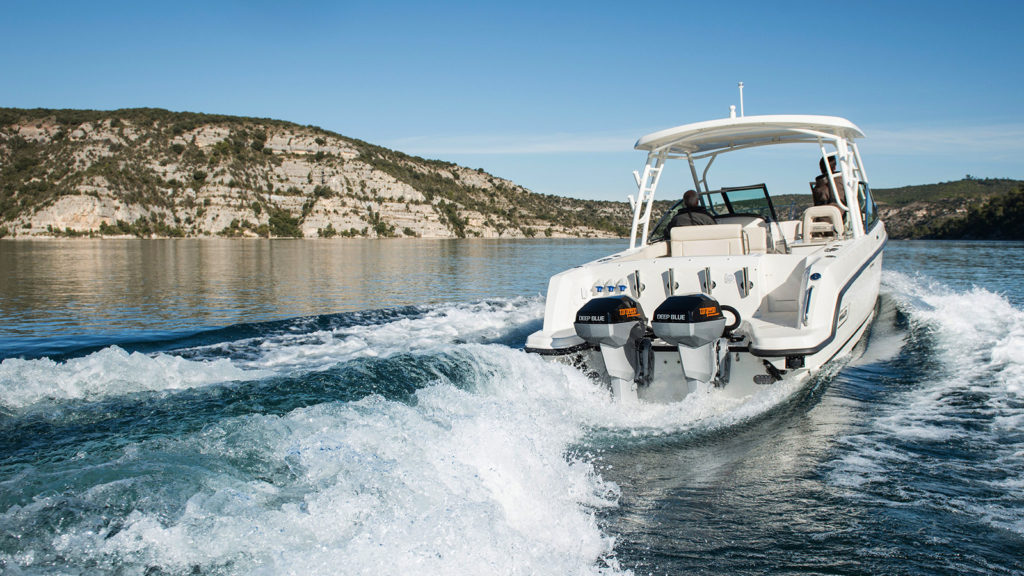
Marine engine types
When it comes to powering boats, there are a few main types of marine engines: outboard, inboard, stern and jet drive engines, plus pod drives. While some people just need their water vehicle to take them on occasional leisure jaunts, others need an engine suited for the thrills of water sports or more serious fishing trips.
Then there’s the choice of petrol vs diesel engines, but that’s an argument for another time.
Outboard marine engines
An outboard engine is mounted on the transom of a boat and is used to both power and steer the boat. To steer a boat with an outboard engine, you actually move the entire engine. Outboard engines are most commonly used for fishing, water sports and pleasure boating.
If you’re looking for an outboard marine engine, why not check out the fully electric Torqeedo Deep Blue 50R? It’s whisper-quiet and the perfect green alternative for commercial operators and green boaties – it even has an optional integrated onboard computer with a touchscreen display.
Inboard marine engines
An inboard engine is located – you guessed it – inside the boat’s hull. These engines power a drive shaft that’s connected to a propeller. An inboard marine engine does not steer the boat, but instead it has a rudder or rudders behind the propeller and controlled by a steering wheel. Inboard boat engines are often used for water sports because they create more predictable waves and excellent torque, and also for high use recreational and commercial boats.
Check out the Yanmar range of diesel inboard marine engines for your next boat, with power ranging from 9hp for sailing boats, up to 440hp for powerboats and up to 1,882hp for commercial engines
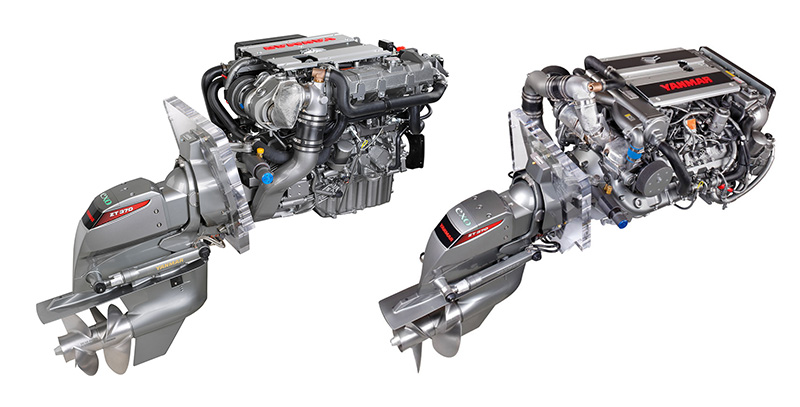
Sterndrive marine engines
A sterndrive engine (sometimes called an inboard-outboard) utilises an inboard engine, mounted on the inside of the hull, for power, which is attached to a drive unit that resembles the lower portion of an outboard engine. And just like outboard engines, this drive unit is used to steer the boat. Sterndrives are perfect for those wanting more horsepower and torque, as well as agility.
Pod drives utilise an inboard engine, with a gearbox and drive unit connected directly to the engine, and mounted right beneath the boat in the water. Much like a sterndrive, the exhaust and water inlet is incorporated with the drive and they are mounted in a manner that allows them to increase fuel efficiency, and reduce drag. They’re also great for docking and tight spaces around marinas, although they are more expensive and require more maintenance than the more traditional shaftdrive and sterndrive layouts.
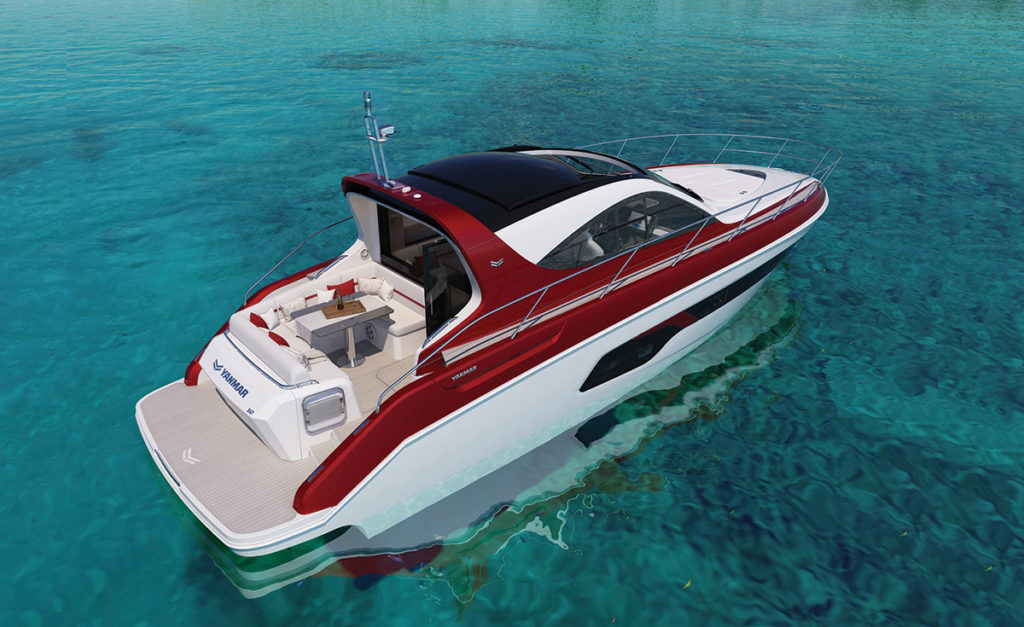
Jet drive marine engines
A jet drive engine uses water to propel the boat and steer it. Water enters through a small inlet at the bottom and is then thrust outwards, creating acceleration. Jet drive marine engines are great for high-performance scenarios such as PWC, and work best in shallow water. Another great feature of jet drive propulsion is that there are no exposed propeller blades.
How to choose the best marine engine for your boat
When choosing the perfect marine engine for your needs, it is important to look at the size and weight of your boat as well as how many passengers and how much equipment you plan on carrying. One great rule of thumb is to go as close as you can to the maximum horsepower that your boat is rated for. If you’re unsure about which marine engine is best for you, find your nearest authorised Power Equipment dealer here.
Check out our Social Media for more news & helpful articles
Read our power news magazine, power news magazine out now, more news just for you.
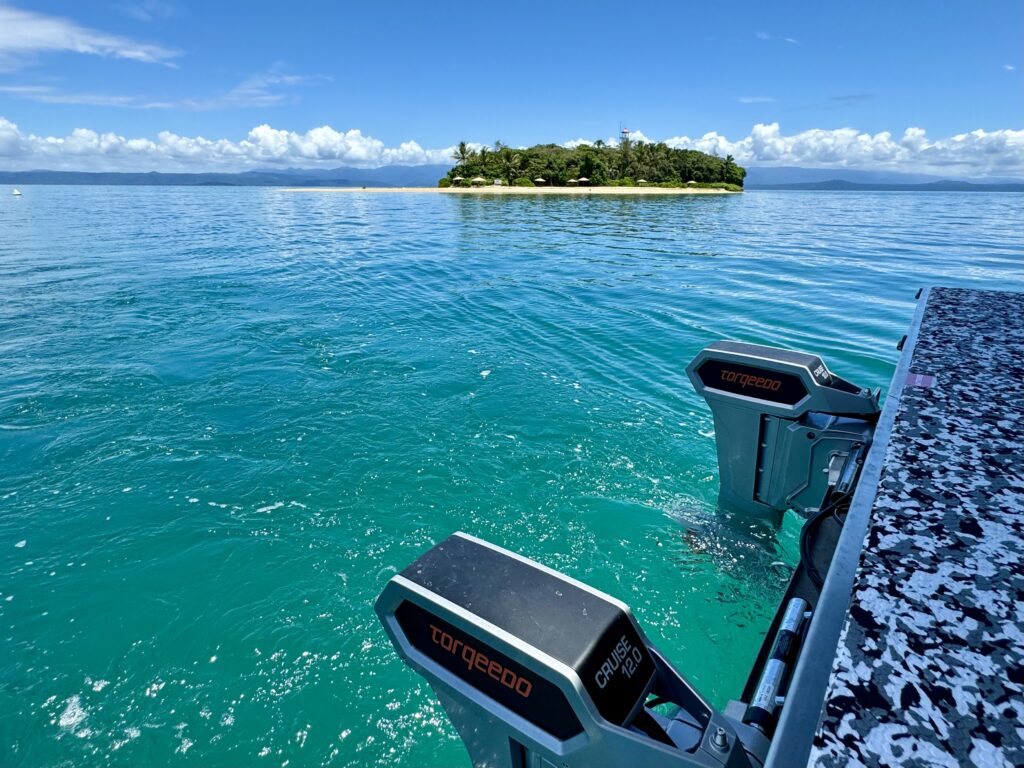
World’s first e-tender for the Great Barrier Reef
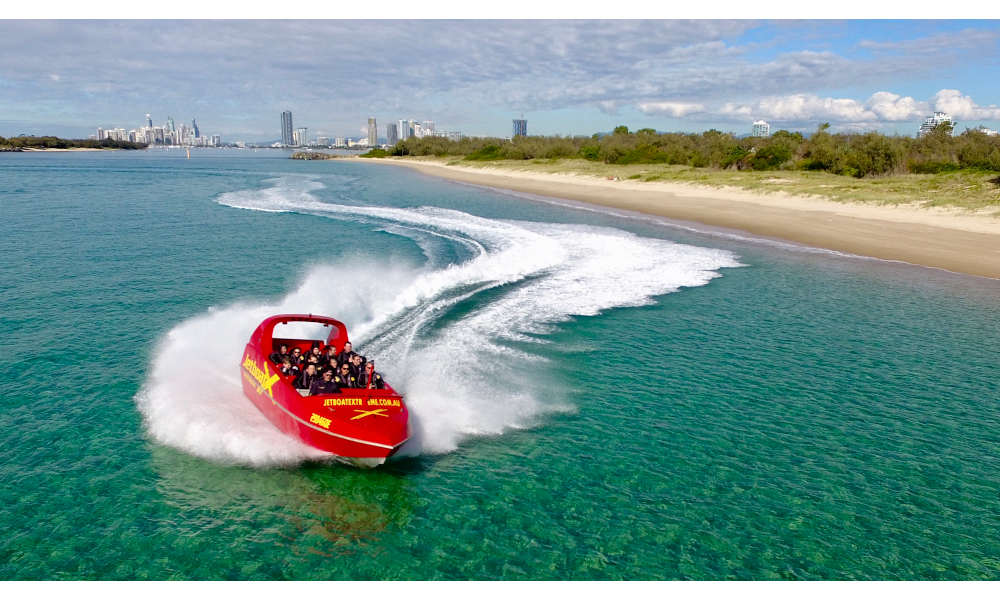
Going to the Extreme with Yanmar
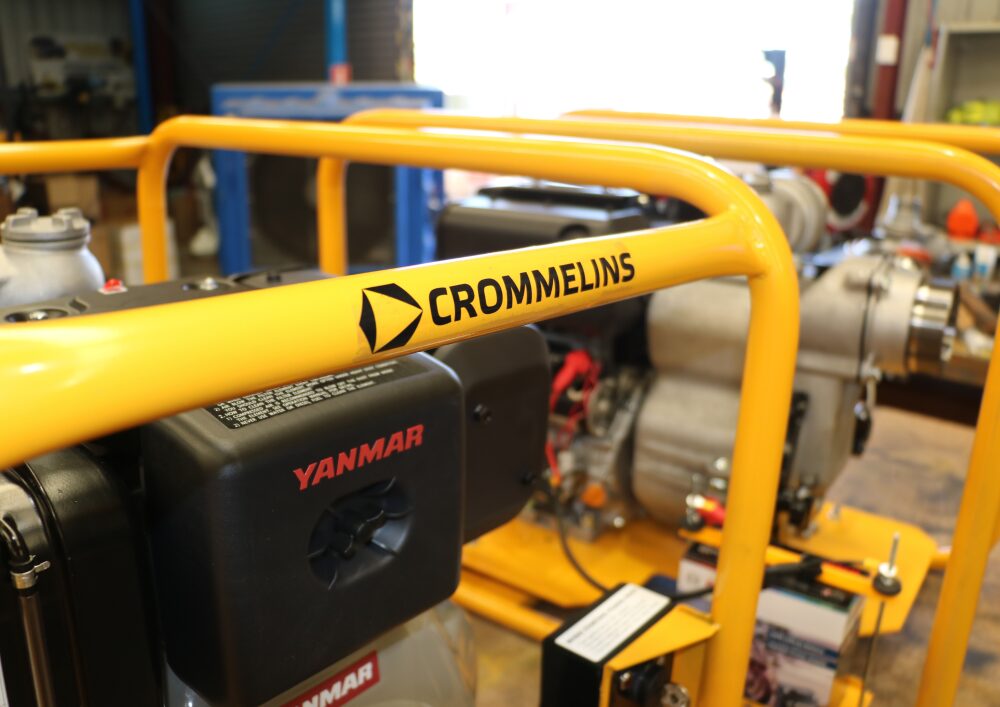
Family businesses working together
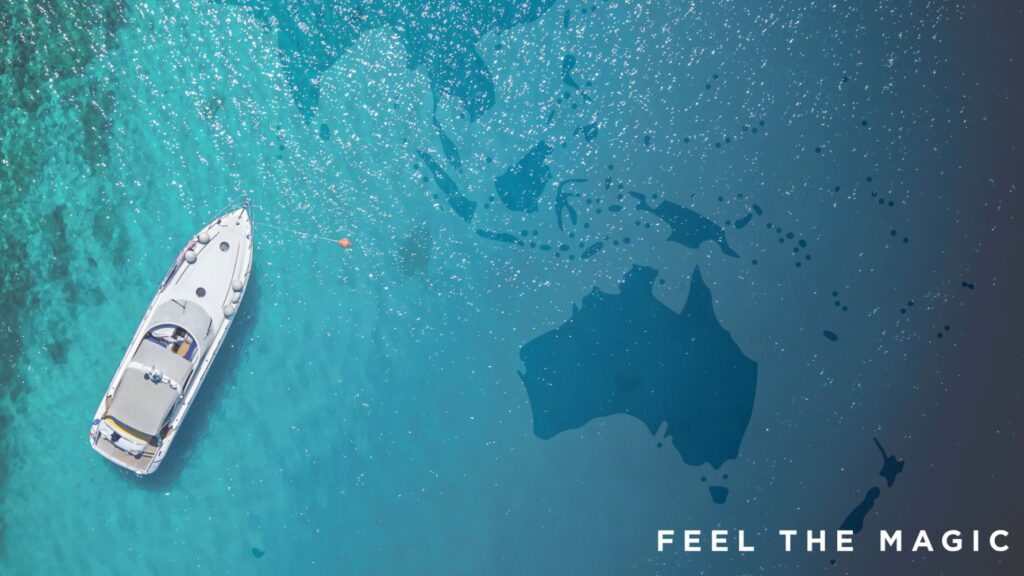
Smartgyro joins the Power Equipment family
Cox 350 diesel outboard, latest news, power profiles, find a dealer.
A Complete Guide to Yacht Types and Sizes
- by yachtman
- August 28, 2023 August 26, 2023

Yachts, symbols of luxury and leisure, provide a stunning escape. From motor yachts to sailing yachts, the world of yachting is both diverse and captivating. Journey with us as we explore the different types and sizes of yachts, uncovering their secrets.
Climb onboard a superyacht , the queen of the seas. These floating palaces boast remarkable dimensions, with amenities such as swimming pools, helipads, and even submarines. Ideal for those seeking indulgence, superyachts are the epitome of yachting excellence.
For a more intimate experience, try a luxury motor yacht . With powerful engines, they let you visit multiple destinations quickly. Enjoy the lap of luxury as you cruise across the sea, appreciating every moment on board these vessels.
Sailing lovers will appreciate classic sailing yachts . Watch their silhouettes gracefully cut through the waves, powered by wind. Feel the passion for sailing, and the freedom, on an adventure akin to ancient seafarers. Uncover your inner explorer while savoring unparalleled serenity.
Catamarans are ideal for sailing with precision and finesse. With twin hulls offering stability and space, catamarans offer great comfort. Enjoy vibrant sunsets to tranquil anchorages, and bliss on water, with these versatile vessels.
For those keen on exploration, expedition yachts are perfect. Built tough and with advanced tech, they are designed for explorations to remote areas. Discover untouched landscapes, encounter wildlife, and make memories in the far-flung corners of the world.
Types of Yachts
Sailboats to mega-yachts – there’s a large choice of yachts. Let’s delve into the types and sizes that meet different needs.
Take a gander at the table below for an overview of yachts:
Sailing yachts are graceful and use wind power. Motor yachts are speedy and powered by engines.
Catamarans stand out with their steadiness and roominess – great for a leisurely cruise. Trawler yachts are great for long-distance trips because they’re fuel-efficient and have comfy living areas.
Adventurous souls should check out expedition yachts . Flybridge yachts have an extra deck level for entertainment and relaxation.
Sports fisher yachts are designed for fishing, with special gear and amenities.
Don’t miss out on your dream yacht – find the perfect one and go on amazing sea experiences. Start your journey now!
Sizes of Yachts
Yachts come in plenty of sizes, each with its own unique features and capabilities. To discover the perfect yacht for your needs, let us explore the sizes of yachts via a table showcasing their specifications.
Here’s what the table looks like:
Moreover, take into account that certain yachts have stability systems, others prioritize speed, and some are customized. I once met a yacht owner who wanted a retractable roof! With the help of creative builders, his dream was fulfilled and he got to enjoy a unique experience on the open seas.
Factors to Consider in Choosing the Right Yacht
Making the right yacht choice involves many key points to think about. These include size, type, budget, use and preferences, like amenities . To decide wisely, assess each factor and see how important they are. Here’s a table of the main considerations when choosing a yacht:
In addition, there are unique details you should consider, like if you plan to charter your yacht when not in use, go for a popular model. If privacy is important, choose a yacht with separate crew quarters. So, here are some tips for making the right choice:
- Get expert advice from experienced yacht brokers or naval architects.
- Choose respected brands that hold their value in case you resell.
- Visit boat shows and yacht exhibitions to explore different models and talk to professionals.
By taking all factors into account and following these suggestions, you can find the perfect yacht that fits your needs. Whether for leisure or adventure, the right yacht will give you amazing memories on the sea.
So many options! In this guide, we explore yacht types and sizes, helping you find the perfect vessel. From sailing yachts to motor yachts , each one offers a unique experience. Plus, you can customize your yacht for a truly special journey.
Let me tell you about James . He dreamed of a yacht that matched his adventurous spirit. So, he found a builder who specialized in customization. The result was amazing – a sleek motor yacht with state-of-the-art diving gear, space for fishing equipment, and luxurious comforts. On his customized vessel, James cruised beautiful coastlines and made memories that will last forever.
When you search for your yacht, remember that customization is key. You can have a tranquil sailing experience or a thrilling adventure. Dive into the ocean of possibilities – your imagination is the only limit.
Frequently Asked Questions
FAQ 1: What are the different types of yachts?
There are various types of yachts, including motor yachts, sailing yachts, catamarans, trimarans, superyachts, and expedition yachts. Each type offers unique features and advantages.
FAQ 2: What is the difference between a motor yacht and a sailing yacht?
A motor yacht, as the name suggests, is powered by an engine and offers more speed and convenience. On the other hand, a sailing yacht relies on wind power and provides a traditional sailing experience with a slower pace.
FAQ 3: What is a superyacht?
A superyacht is a luxury yacht with high-end amenities and extravagant features. These yachts often offer spacious cabins, multiple decks, swimming pools, helipads, and other luxurious facilities.
FAQ 4: What is the average size of a yacht?
Yachts can vary greatly in size. The average size of a yacht ranges from 30 to 60 feet. However, larger yachts, known as superyachts, can measure over 100 feet in length.
FAQ 5: What is the advantage of a catamaran or trimaran?
Catamarans and trimarans provide more stability due to their dual or triple hull design. They offer spacious interiors, increased deck space, and enhanced fuel efficiency compared to traditional monohull yachts.
FAQ 6: What is an expedition yacht?
An expedition yacht is designed for long-range cruising and exploring remote destinations. These yachts feature robust construction, advanced navigation systems, and ample storage for supplies and equipment.
Leave a Reply Cancel reply
Your email address will not be published. Required fields are marked *
Save my name, email, and website in this browser for the next time I comment.
Yacht Design Unveiled - A Comprehensive Exploration of Structure, Function, and Elegance
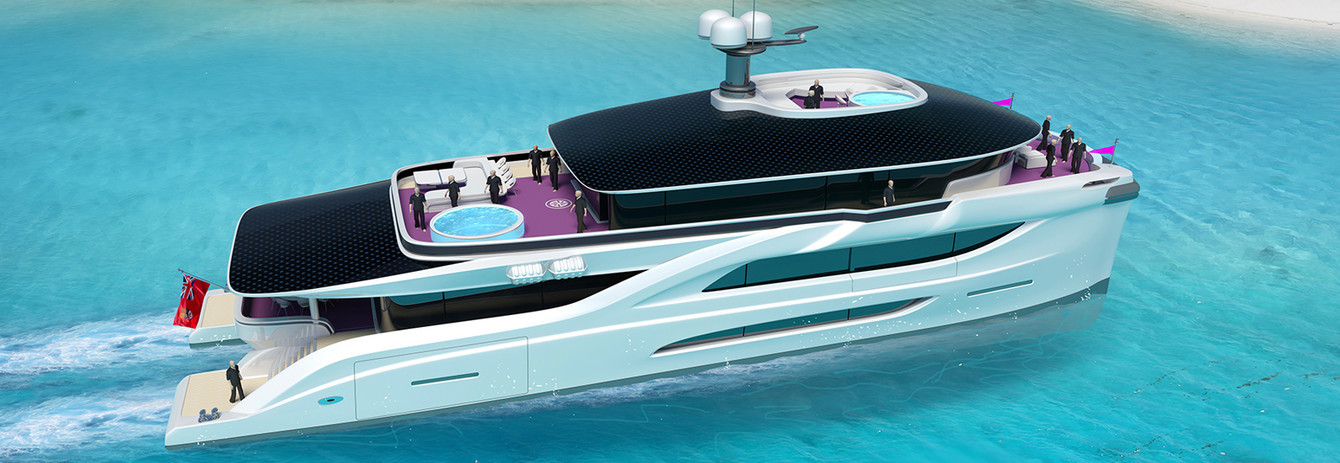
Definition of a Yacht
Historical background.
Yachts have a rich history, evolving from humble fishing and merchant vessels to symbols of luxury and engineering marvels. The word "yacht" originally comes from the Dutch word "yacht," which means "hunt," and was initially used for vessels used to chase pirates. Today, yachts are associated with leisure, elegance, and cutting-edge technology.
Purpose and Usage
Yachts serve various purposes, ranging from private leisure and entertainment to professional racing and exploration. They are often used for holidays, celebrations, and sometimes even as full-time residences. The flexibility in design and amenities caters to a wide array of needs and preferences, making yachts a popular choice for sea lovers.
Variations in Yacht Types
Different types of yachts cater to different needs and desires. Here are some of the common variations:
Motor Yachts
Designed for comfort and luxury, motor yachts are powered by internal combustion engines and are perfect for long-distance cruising.
Sailing Yachts
These yachts are powered primarily by sails, offering a more traditional and environmentally friendly sailing experience.
Expedition Yachts
Built for durability and long-range exploration, expedition yachts are equipped to handle challenging sea conditions and remote locations.
Racing Yachts
Designed for speed and agility, racing yachts participate in competitive sailing and are crafted with the latest technology to maximize performance.
The yacht's definition, history, purpose, and variations are as multifaceted as the vessels themselves. These factors contribute to the allure and ongoing fascination with yachts, marking them as significant symbols in maritime culture.
Hull Design and Structure
A. materials used.
Modern yachts utilize various materials in their hull construction, including fiberglass, aluminum, steel, and composite materials. Each material offers different properties in terms of weight, strength, durability, and maintenance requirements, and the choice depends on the yacht's intended use and design preferences.
Understanding the hull shape is essential for understanding a yacht's performance and characteristics. Here are some common designs:
1. Displacement Hulls
Designed to push water aside as they move, displacement hulls provide a smooth and comfortable ride, making them suitable for long-distance cruising.
2. Planing Hulls
These hulls are designed to rise and glide on top of the water at higher speeds, offering speed and efficiency but often sacrificing some comfort in rough seas.
3. Multihull Designs
Including catamarans and trimarans, multihull designs provide increased stability and space, offering a unique sailing experience.
C . Stability and Hydrodynamics
Stability is a crucial aspect of yacht design, influencing safety and performance. Factors such as weight distribution, buoyancy, hull shape, and ballast contribute to a yacht's stability. Hydrodynamics involves the study of water flow around the hull, impacting speed, efficiency, and maneuverability.
D. Keel Design
The keel is the backbone of a yacht's structure and plays a vital role in stability, especially in sailing yachts. Keels vary in shape and size, ranging from full-length traditional keels to modern fin and bulb designs, each with distinct performance characteristics.
E. Impact of Hull Design on Performance
The combination of materials, shape, stability measures, and keel design all contribute to a yacht's overall performance. These elements must be harmoniously integrated to create a vessel that meets the desired balance of speed, comfort, efficiency, and safety.
The hull is arguably the most critical part of a yacht, as it interacts directly with the water and affects nearly every aspect of the yacht's functionality. Understanding the intricacies of hull design provides insights into the complex engineering and artistic considerations that go into creating these luxurious and capable vessels.
Deck Layout and Superstructure
Deck plans and features.
The layout of the deck is crucial for the functionality and aesthetic appeal of a yacht. It includes the arrangement of seating areas, sunbathing spots, dining tables, and other leisure facilities. Design considerations often focus on maximizing space, providing flow between indoor and outdoor areas, and ensuring accessibility and comfort.
Cabin Layout
The interior cabin design of a yacht must be meticulously planned to provide comfort and privacy for passengers. This includes the arrangement of sleeping quarters, bathrooms, lounges, and entertainment areas. The cabin layout often reflects the intended use of the yacht, whether for family cruising, chartering, or long-haul journeys.
Cockpit and Helm Station
The cockpit and helm station are essential parts of a yacht, hosting the steering and navigation controls. The design must be ergonomic and efficient, providing the captain and crew with easy access to all necessary instruments. Visibility, protection from the elements, and integration with modern technology are key considerations.
Windows, Hatches, and Portals
Windows, hatches, and portals are essential for providing natural light, ventilation, and views from within the yacht. The design and placement must balance aesthetics with practicality, considering aspects such as weather resistance, safety, and ease of use.
Safety Features
Safety is paramount in yacht design, and the deck layout must incorporate necessary safety features. This includes the positioning of life rafts, grab rails, non-slip surfaces, fire extinguishers, and emergency exits. The design must also ensure that safety equipment is easily accessible while remaining unobtrusive to the overall aesthetics.
The deck layout and superstructure of a yacht are essential elements that contribute to its overall functionality, comfort, and appearance. These aspects require careful planning and consideration to create a cohesive and luxurious environment that caters to the needs and desires of passengers and crew alike. From relaxation to navigation, the design must harmonize practicality with the indulgent qualities that make yachts a symbol of prestige and enjoyment.
Rigging and Sails (for Sailing Yachts)
Types of rigs.
Sailing yachts utilize various rigging configurations, each with unique characteristics and advantages. Common types include:
The sloop is the most common rig, featuring a single mast and two sails. It offers simplicity, and efficiency, and is suitable for most sailing conditions.
Similar to the sloop but with an additional headsail, the cutter rig provides more flexibility in various wind conditions, allowing for better balance and control.
The ketch rig features two masts with the mizzen mast positioned forward of the rudder post. This design offers additional sail combinations and can enhance maneuverability.
4. Schooner
Characterized by two or more masts, with the foremast being shorter or the same height as the main, schooners provide a traditional aesthetic and are often chosen for their beauty and performance under various wind conditions.
Sail Materials and Shapes
Modern sail materials range from traditional canvas to advanced synthetic fibers that offer increased strength, durability, and efficiency. The shape of the sails, including their cut and profile, plays a significant role in how they interact with the wind, affecting speed and stability.
Mast and Boom
The mast and boom are vital components in supporting and controlling the sails. Their design, material, and positioning impact the yacht's balance, responsiveness, and overall sailing performance.
Running and Standing Rigging
The rigging of a sailing yacht is categorized into two main types:
- Standing Rigging: These are the fixed lines, wires, or rods that support the masts and control the position of the sails.
- Running Rigging: These are the adjustable lines used to raise, lower, and trim the sails, allowing for precise control over sail shape and angle.
Impact of Rigging on Performance
The combination of rig type, sail materials, mast, boom, and rigging intricately affects a sailing yacht's performance. The design must align with the intended use, whether for leisurely cruising, competitive racing, or long-distance travel. The quality and setup of the rigging can make a difference in efficiency, responsiveness, and the overall sailing experience.
The rigging and sails are the heart of a sailing yacht, embodying the grace and power of wind-driven movement. Understanding the complexities of these systems provides insight into the art and science of sailing, where technology meets tradition in a delicate dance with the wind.
Propulsion Systems (for Motor Yachts)
Engine types and configurations.
Motor yachts rely on a variety of engine types and configurations to achieve desired performance levels. Common options include:
- Inboard Engines: Positioned within the hull, inboard engines offer better balance and are typically used for larger yachts.
- Outboard Engines: Attached to the outside of the transom, outboard engines are accessible for maintenance and are common in smaller yachts.
- Pod Drives: A newer technology, pod drives offer exceptional maneuverability and efficiency.
Different configurations, such as single or twin engines, impact speed, control, and redundancy.
Fuel choices for motor yachts include:
- Diesel: Known for efficiency and torque, diesel engines are common in cruising yachts.
- Gasoline: Often used in sportier vessels, gasoline engines can offer higher horsepower.
- Alternative Fuels: Biofuels and other alternative fuels are emerging options, aligning with sustainability efforts.
Transmission Systems
The transmission system connects the engine to the propellers, translating engine power into motion. Options include:
- Direct Drive: Offers simplicity and efficiency but may limit maneuverability.
- V-Drive: Allows for better engine placement but is more complex.
- Jet Drive: Utilizes a jet of water for propulsion, providing exceptional control.
Propeller Design
Propellers are vital in translating engine power into thrust. Factors such as size, pitch, blade number, and material must be matched to the yacht's size, weight, and intended use to optimize performance.
Hybrid and Electric Options
In response to environmental concerns and technological advancements, hybrid, and electric propulsion systems are gaining popularity in the yachting industry. These options offer:
- Hybrid Systems: Combining traditional engines with electric elements, hybrids can reduce emissions and increase efficiency.
- Electric Propulsion: Fully electric systems eliminate emissions and offer silent operation but require substantial battery capacity.
Propulsion systems in motor yachts are complex and multifaceted, encompassing a range of technologies and design considerations. The choices made in engines, fuel, transmission, propellers, and alternative options shape not only the yacht's performance but also its environmental impact. As technology continues to evolve, the world of yacht propulsion offers exciting opportunities for innovation, efficiency, an
Navigation and Electronics
Navigation tools and instruments.
Modern yachts are equipped with a vast array of navigation tools and instruments that aid in safe and efficient travel. These may include:
- GPS Systems: For accurate positioning and route planning.
- Radar: To detect other vessels, landmasses, and obstacles.
- Sonar: For understanding underwater terrain and depth.
- Weather Instruments: To monitor and predict weather conditions.
- Compasses, Charts, and Sextants: Traditional tools that remain valuable for navigation.
Communication Systems
Reliable communication systems are essential for safety and coordination on a yacht. This technology enables:
- VHF Radios: For communication with other vessels and coastal authorities.
- Satellite Phones: Providing global coverage, especially in remote areas.
- Internet Connectivity: Allowing access to information, social media, and emails while at sea.
Autopilot and Stabilization
Advanced technology has enabled:
- Autopilot Systems: These can automatically steer the yacht along a set course, reducing crew workload.
- Stabilization Systems: Utilizing fins or gyroscopes, these systems minimize rolling, enhancing comfort on board.
Entertainment Systems
Luxury yachts often come with state-of-the-art entertainment systems, including:
- Audio Systems: With surround sound for music and entertainment throughout the yacht.
- Video Systems: Including large-screen TVs, projectors, and streaming services.
- Gaming Consoles and Onboard Cinemas: For added entertainment and enjoyment.
The navigation and electronics of a yacht encompass a blend of traditional skills and modern technology. This combination ensures that the vessel operates safely, efficiently, and with the convenience and luxury expected in contemporary yachting. The integration of these systems requires thoughtful design and understanding of both maritime tradition and the latest technological advancements. The result is a harmonious fusion that enhances the joy of yachting, providing comfort, enjoyment, and confidence at sea.
Interior Design and Accommodation
Living spaces.
The living spaces within a yacht are designed to provide comfort , style, and functionality. Key considerations include:
- Layout: Efficient use of space, considering traffic flow and purpose.
- Furniture: Comfortable seating, storage, and convertible options.
- Aesthetics: Coordination of colors, materials, and style to create a harmonious environment.
Kitchen and Galley Design
The kitchen, or galley, must be highly functional and well-equipped, even in limited space. Key elements include:
- Appliances: Incorporating compact and efficient appliances that meet culinary needs.
- Storage: Intelligent use of space for utensils, cookware, and provisions.
- Workspaces: Designing ergonomic areas for food preparation.
Sleeping Quarters
Sleeping quarters, or staterooms, require thoughtful design to ensure privacy, comfort, and storage. Considerations include:
- Beds and Bedding: Choosing appropriate sizes and quality for restful sleep.
- Storage: Incorporating closets, drawers, and shelves to stow personal items.
- Ambiance: Creating a cozy and relaxing atmosphere through lighting and décor.
Bathroom and Sanitation
The design of bathrooms, or heads, on a yacht must consider:
- Plumbing: Efficient systems for fresh water and waste management.
- Fixtures: Compact and functional sinks, toilets, and showers.
- Materials: Choosing materials that resist moisture and wear.
Customization and Luxury Options
For those seeking a personalized and upscale experience, customization options can include:
- Artwork and Fine Materials: Incorporating unique pieces and high-end finishes.
- Specialized Rooms: Such as gyms, spas, or libraries to match individual preferences.
- Smart Technology: Integrating automation for lighting, climate control, and entertainment.
- Unique Features: Such as aquariums, wine cellars, or underwater viewing areas.
The interior design and accommodation of a yacht are where form meets function, blending aesthetics with practical considerations. Every detail is meticulously planned to create an environment that reflects the owner's taste, provides the amenities of the home, and maximizes the joy of life at sea. Whether crafting a space that is functional and straightforward or one that exudes opulence and individuality, yacht interior design is an art form that enhances the experience of both living and traveling on the water.
Safety Equipment and Measures
Ensuring safety on a yacht requires a comprehensive approach that combines technology, training, and constant vigilance. Here's an overview:
Life-saving Appliances
Essential life-saving devices on a yacht include:
- Life Rafts: Capable of supporting all passengers and crew in emergencies.
- Life Jackets: Available for everyone on board and suitable for various water conditions.
- Life Buoys and Man Overboard Devices: To assist in quick rescue operations.
- Emergency Signals and Flares: For alerting nearby vessels or rescue services.
Fire Prevention and Control
Fire safety involves both preventive measures and emergency responses:
- Fire Extinguishers: Strategically placed and suitable for different types of fires.
- Fire Suppression Systems: Automated systems for engine rooms and other high-risk areas.
- Alarms and Detectors: Early warning devices for smoke and heat.
- Training and Drills: Regular practice to ensure crew and passengers know how to respond.
Security Systems
To protect against unauthorized access or criminal activities, security measures might include:
- Alarms and Sensors: To detect intruders or unauthorized access.
- Cameras and Surveillance: For monitoring various areas of the yacht.
- Access Control: Including locks, key cards, or biometric systems.
- Security Personnel: On larger yachts, trained security staff may be part of the crew.
Weather Monitoring and Storm Preparation
Monitoring weather and preparing for storms is vital for safety at sea:
- Weather Stations and Forecasting Tools: For real-time updates and predictions.
- Storm Tactics and Equipment: Including storm sails, sea anchors, or drogues.
- Secure Storage: Ensuring that all loose items are stowed and secured.
- Emergency Plans: Clear procedures for passengers and crew to follow in extreme weather.
Safety on a yacht is a multifaceted responsibility that requires diligence, planning, and a clear understanding of potential risks and challenges. From basic life-saving appliances to advanced security systems and weather preparedness, every aspect must be considered and regularly reviewed. The collaboration between designers, captains, crew, and owners in prioritizing safety ensures that yachting remains an enjoyable and secure pursuit, where the beauty and thrill of the sea can be experienced with confidence and peace of mind.
Maintenance and Care
The ongoing maintenance and care of a yacht are essential for its appearance, performance, and longevity. Proper upkeep involves several critical aspects:
Regular Checks and Inspections
Frequent examinations ensure that the yacht stays in optimal condition and that any issues are detected early. Regular checks include:
- Engine and Mechanical Systems: Monitoring for wear, leaks, and performance.
- Electrical and Plumbing Systems: Checking for proper function and integrity.
- Sails and Rigging (for Sailing Yachts): Inspecting for damage or wear.
- Hull and Deck: Assessing for cracks, blisters, or other structural concerns.
Cleaning and Preservation
Regular cleaning and preservation enhance the yacht's appearance and protect against the harsh marine environment:
- Hull Cleaning: Removing algae, barnacles, and other growth to maintain performance.
- Interior Cleaning: Ensuring all living spaces are clean and comfortable.
- Protective Finishes: Applying varnishes, waxes, or coatings to preserve surfaces.
Repairs and Refitting
Addressing damages promptly and conducting periodic refitting can extend the yacht's life and keep it up to date:
- Minor Repairs: Handling small issues like leaks or cosmetic damages.
- Major Refitting: Upgrading systems, reconfiguring spaces, or overhauling major components.
- Utilizing Professional Services: Engaging skilled technicians or shipyards for complex tasks.
Winterizing and Storage
For yachts in seasonal climates, proper winterizing, and storage are vital to prevent damage:
- Winterizing Procedures: Draining water systems, protecting engines, and applying antifreeze where needed.
- Storage Options: Select suitable indoor or outdoor storage, considering protection from weather and security.
- De-Winterizing: Properly prepare the yacht for use again in the spring, ensuring all systems are functional.
Maintenance and care are continual processes that require attention to detail, technical skill, and an understanding of the unique challenges of the marine environment. The investment in proper upkeep not only safeguards the vessel's value but enhances the enjoyment and safety of those aboard. Whether performed by the owner or professional services, consistent and thoughtful maintenance is an integral part of responsible yacht ownership, reflecting a commitment to excellence and a genuine appreciation for the art and pleasure of yachting.
Summary of Key Components
Owning and operating a yacht is a complex endeavor that requires understanding a multitude of key components. From the structure of the hull to the intricacy of the rigging, the elegance of interior design to the essential safety measures, each part plays a vital role in the overall experience of yachting.
Modern Innovations
In recent years, the world of yachting has witnessed significant innovations. From cutting-edge propulsion systems to intelligent navigation tools and luxurious customization options, modern yachts integrate technology and design in remarkable ways. These advancements have not only enhanced performance and comfort but have also contributed to sustainability and efficiency.
Importance of Understanding Yacht Anatomy
A comprehensive understanding of yacht anatomy is essential for anyone involved in yachting, whether as an owner, crew member, designer, or enthusiast. It enables informed decisions, proper maintenance, and an appreciation of the fine craftsmanship that goes into these vessels. This knowledge also contributes to safety, as understanding how a yacht functions is foundational to responsible operation and emergency response.
Future Trends in Yacht Design
Looking forward, trends in yacht design are likely to continue to evolve, reflecting shifts in technology, social values, and aesthetic preferences. The increasing emphasis on sustainability may drive further development of hybrid and electric propulsion systems. Additionally, the integration of smart technology, customization, and innovations in materials and construction techniques will shape the future of yachts, making them even more responsive, luxurious, and environmentally friendly.
The world of yachts is a rich tapestry of art, science, tradition, and innovation. It encompasses a broad spectrum of knowledge, skills, and creativity, blending form and function in ways that are both practical and beautiful. The continual pursuit of excellence in design, technology, and craftsmanship ensures that yachts remain symbols of prestige and joy, connecting us with the sea in ways that are at once timeless and ever-changing. Whether for leisure, sport, or exploration, yachts continue to inspire and challenge, reflecting humanity's enduring fascination with the water and our endless desire to explore, enjoy, and excel.

- Advertising
Customer reviews

- Netherlands
- United States
- United Arab Emirates
- United Kingdom

Introduction To Different Types Of Yachts
We have discussed the differences between cruise ships and their older counterparts, ocean liners in one of our previous articles. We have also learned about the various types of cruise ships.
In this article, we shall discuss the types of yachts.
To begin with, what are yachts? Yachts are those small to average-sized vessels used for pleasure, vacation, or sports activities like racing. The most distinct feature that distinguishes yachts from any other boat or vessel is their aesthetics.
Yachts are attractive and sleek in appearance, have narrow and streamlined beams, and are often pleasing to the eye. However, size is also another important parameter taken into consideration.
As per classification rules, a vessel dedicated for the aforesaid purposes is deemed to be a yacht only when it is over a certain length of at least 10 meters or 33 feet.
Though sizes of yachts can be as large as more than 70-80 meters, they are rarely 100 meters or more. Larger vessels of such extents come under the purview of cruisers or passenger ferries as discussed before. A handful of exceptions exist.
The private megayacht Azzam, having a length of 180 meters, is the longest existing motor vessel in the world to be classified as a yacht.
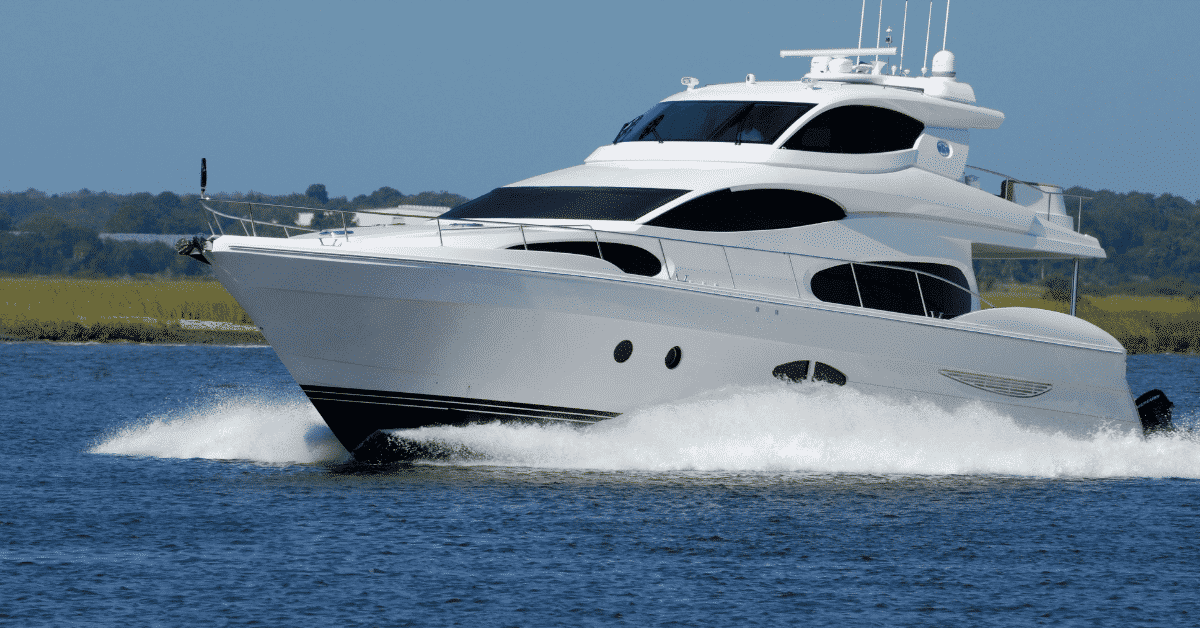
Types of Yachts
Based on length and size, yachts can be classified into the following categories:
Megayachts: These are the largest of their kind. Most yachts under this category have lengths of over 50 meters. They are used for leisure or recreational purposes and are suitable for large families or groups. Most of such yachts are owned and operated by organizations similar to cruise lines but private ownership also exists. These vessels have dedicated crew to cater for the services of passengers. In terms of facilities and amenities, they are very much close to luxury cruisers and are often replete with everything from swimming pools to pubs, cafeterias to movie halls, gyms to restaurants, suite rooms to conference banquets. Of course, provisions of all these depend on the size of the vessel.
Superyachts: These are lesser in size than the former. Their average length ranges from 30-50 meters. They also have appealing features like Jacuzzis, sky lounges, dining rooms, and bars. Superyachts can be both motor-driven or have sails (shall discuss more on this later). They also are often served by professional crew members. Both superyachts and megayachts are also called offshore yachts for their ability to tread deeper waters.
Medium-sized luxury yachts: With lengths ranging from 20-30 meters, they are suitable for large families or tourist groups. They may have a small number of dedicated crew members. Though not having many amenities like their larger counterparts, they offer a significant degree of comfort and luxury. They operate near the shore or in rivers.
Smaller Yachts: These vessels range between 10 meters to 18 or 20 meters. Most of such vessels are privately owned and are used for purposes such as leisure or water sports. They can be both motor or sail-driven or a combination of both. They have the main deck and living quarters comprising of at most 2 or 3 rooms below it. These yachts may have a small promenade deck or a flybridge. These yachts are compact, streamlined, and aesthetically attractive. Such yachts have limitations for venturing beyond a certain limit of the sea or river.
By propulsion
Sailboats: Like most other ships, yachts have evolved from having prominent sails for plying in the waters by the virtue of wind forces to having motorized propulsions. Unlike cruisers and ferries which became popular at a much later date during the 17th or 18th centuries, yachts or the concept of pleasure boats saw their advent as early as the Pharaonic Egyptian era.
For several centuries, these pleasure boats were characterized by different forms and sizes of sails. The areas of the sails depended on the size of the vessel, of course, and were primarily composed of natural materials such as flax or cotton fibers.
However, with the introduction of synthetics, sails made of polyester or nylon became increasingly popular and have continued to be used to date. Sail yachts are of numerous types, most of their designs derived from traditional variants of monohull sailboats like sloop, catboats, cutter, ketch, or schooner.
These vessels can be single sail-single mast (like catboats), double sail-single mast (sloop), or other versions of multiple sails-multiple masts (like ketches or schooners). Though almost all modern yachts employ mechanized propulsion, many still feature sails simply for aesthetics (see gullet yachts below).
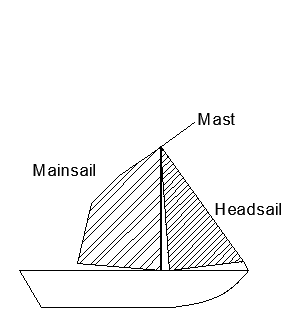
Motor Yachts: After the Industrial revolution, yachts, in tandem with other vessels, incorporated engines for their propulsion. Coal-fired steam engines used both fire-tube and water-tube boilers. Over the years, steam engines became superseded by modern fuel-powered combustion engines. Yachts feature both four-stroke gasoline engines, especially for smaller and high-speed designs, as well as two-stroke diesel engines, for larger designs. Yachts may use single or twin-screw propellers of 3-blade, 4-blade, 5-blade, or even 6-blade propellers based on the requirements.
Gulet Yachts: They are a hybrid of the above types and employ both sails and engines for propulsion. As mentioned above, often the sails, even when no longer required, are kept for aesthetic appearance.
Based on Hull Design
Monohull: Commonly, yachts are of monohull configuration. Such hulls can be either of displacement or planing type. For displacement-type hulls, the buoyancy is created by the displacement and such vessels have average speeds not exceeding a certain limit.
Planing hulls, as we know, are meant for high-speed crafts where a substantial portion of the hull weights at high speeds are supported by the component of hydrodynamic lift as opposed to the hydrostatic lift from buoyancy. These vessels have very low wetted surface area during high speeds (and thus less frictional resistance) and the forward portion of the hull mainly stays above the waterline.
During rest or low speeds, once again, they are supported by buoyant forces. Yachts with planing-type hulls are quite small in size and are primarily meant for pleasure or water sports activities. Some designs combine both the elements of planing and displacement characteristics forming semi-displacement hulls.
Multihull: Yachts can also be multi-hull configurations, i.e., catamaran (two hulls) or trimaran (three hulls) types. Catamaran designs are chiefly characterized by two slender hull structures joined by the extension of the bridge deck or a large crossbeam. These vessels are highly stable and seaworthy.
Trimarans have a central hull and are further connected to a pair of hulls on either side by beams, superstructures, or decks. Multihull yachts mainly rely on their inherent stability and are not very fast like planning crafts. As expected, they are very expensive in construction. They are mainly composed of fibreglass and other composites.
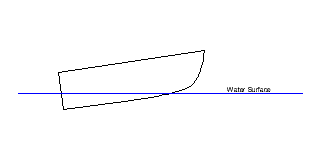
Based on Purpose
Cruiser Yachts: They are conventional yachts of varying sizes meant for passenger pleasure and vacationing. These vessels are permitted for long-distance travel up to moderate depths of the ocean. They are mainly of displacement type. Luxury yachts often come under this category.
Fishing Yachts: These yachts are chiefly built for fishing purposes as a recreational activity. These yachts have space for ample fishing equipment and gear and are characterized by open decks favourable for fishing as well as hauling up the catch. These vessels are permitted to venture into areas having the best chances of fishing but are barred from deeper depths of the seas.
Trawler Yachts: Their purpose is similar to a conventional fishing vessel designated for mass-scale commercial fishing. However, unlike the bland design of trawlers, these vessels imbibe some degree of aesthetics familiar to a yacht.
Sports Cruisers: These cruisers are meant for recreational or sports activities and short fast trips. Such vessels are mostly characterized by either planning or semi-displacement hulls. They are relatively smaller in size and thus accommodation spaces are limited. Such vessels have a stylish and sleek-appearing flybridge and an open deck for a better experience. Such vessels reach speeds from 30 knots to 50 knots. Sports yachts are also often deployed for racing purposes. They are sometimes also known as open yachts. For those willing to indulge in a bout of adrenaline rush like in sports cars, these yachts are the apt choice!
Sport Fishers: These vessels combine both the purposes of luxury as well as fishing. Like fishing yachts, they are equipped with fishing gear as well as have features for ample passenger comfort and amenities. They often have semi-displacement or planing configurations. During fishing activities, they are idle or operate at low speeds and during pleasure, they may be operated at high speeds. Though generally not very big in size, larger vessels with sizes around 30 meters exist.
Expedition Yachts: For those having an appetite for some real adventure or exploration, these yachts are just the right ones. They are designed for longer voyages and often receive permits for long-distance trips, often to uncharted and remote locations. Since adventure or exploration groups involve quite a number of people and unpredictable sea states, these vessels are significantly large in size. They are strict of displacement hulls, often strengthened to suit various types of conditions likely to be encountered. For those vessels venturing into icy waters, the hulls are designed and constructed based on Ice-Class regulations. From coral reefs to the wilds of the Pacific, such vessels are capable of literally traversing anywhere! Modern competent designs incorporate all elements of passenger comfort, luxury, amenities, power, endurance, strength.
Classic Yachts: Some still have a taste for vintage times. Classic yachts are the older restored and retrofitted vessels or newly built ones designed in a way similar to yachts built in the yesteryears. The hull is as per the older variants and often has sails. They are strictly for shallow water and near-shore leisure for those seeking a touch of royalty and the glorious past. These are mainly owned by vintage collectors or connoisseurs.
You might also like to read:
- Top 10 Biggest RoRo Ships In The World
- Top 10 Biggest Ice Breaker Ships in the World in 2022
- Top 10 Largest Cruise Ships in 2022
- Top 10 Biggest LPG Carriers
- Top 10 Biggest LNG Ships of 2022
Disclaimer: The authors’ views expressed in this article do not necessarily reflect the views of Marine Insight. Data and charts, if used, in the article have been sourced from available information and have not been authenticated by any statutory authority. The author and Marine Insight do not claim it to be accurate nor accept any responsibility for the same. The views constitute only the opinions and do not constitute any guidelines or recommendations on any course of action to be followed by the reader.
Do you have info to share with us ? Suggest a correction

Latest Naval Arch Articles You Would Like :
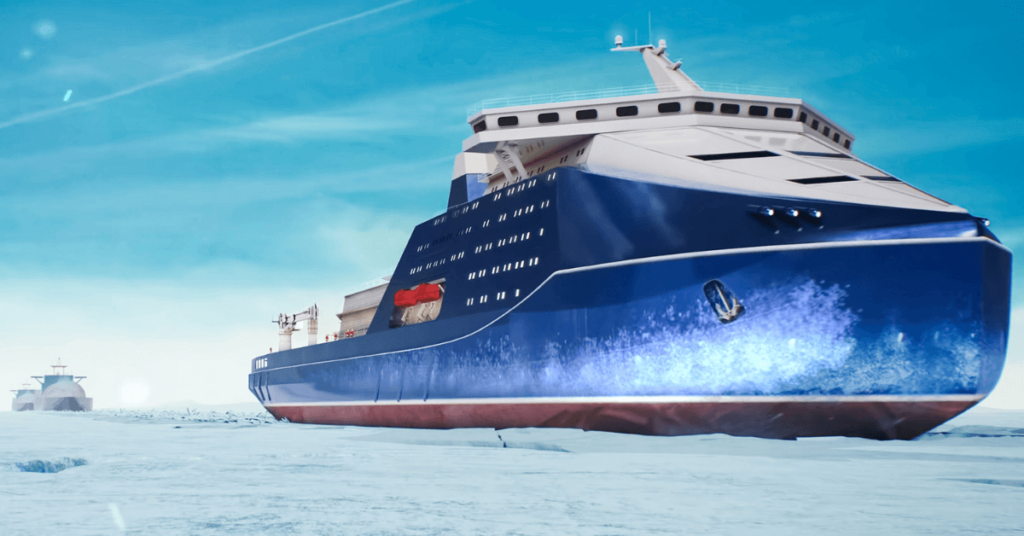
Design And Construction Of Ice Class Ships – Part 1
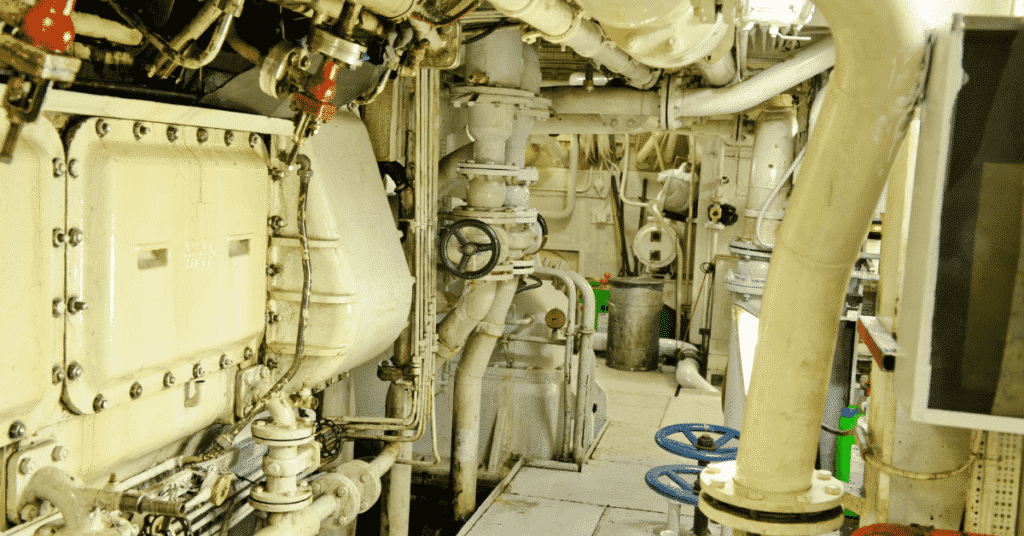
Types of Vibrations On Ships – Machinery Vibrations
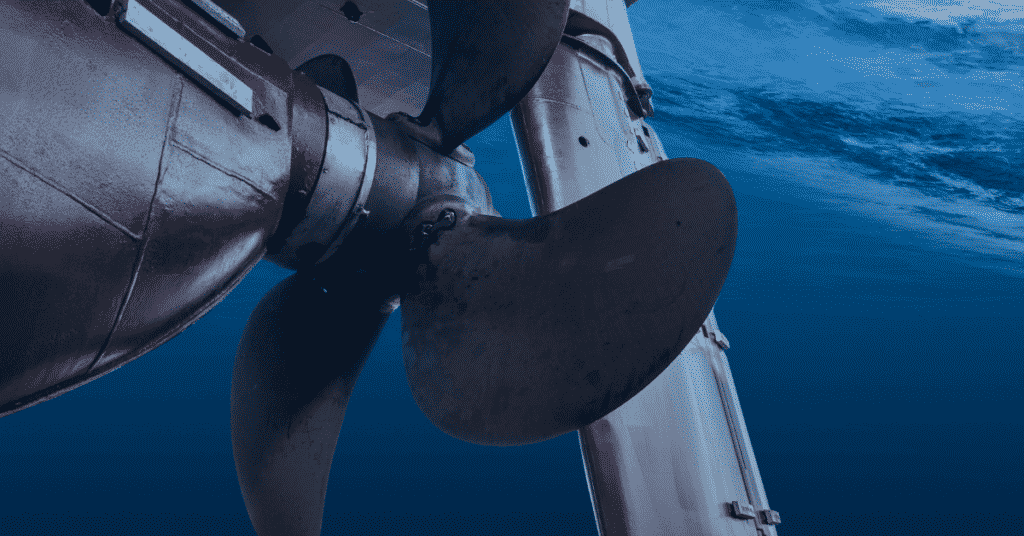
Different Ways To Reduce Ship Propeller Vibrations And Increase Its Efficiency
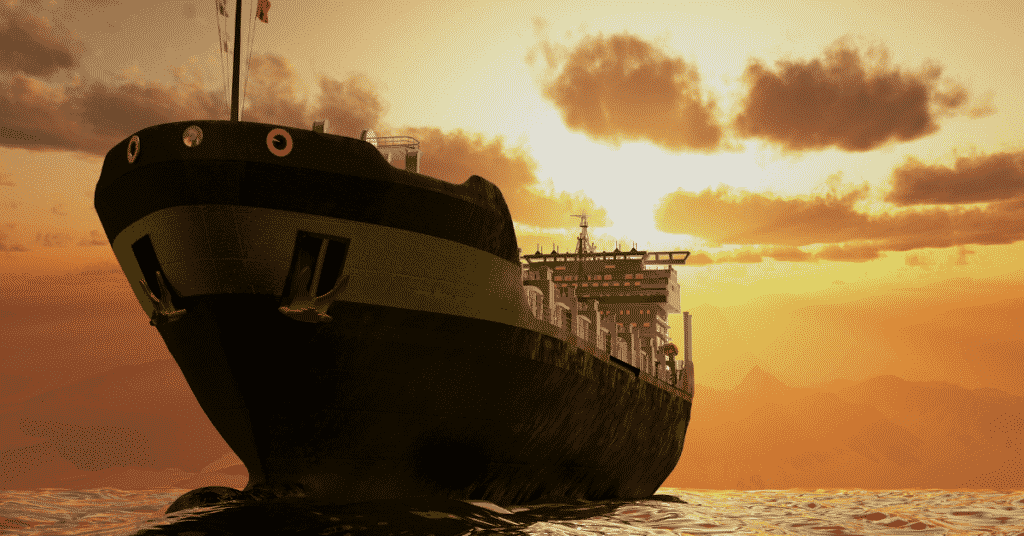
What Are “Structural Discontinuities” In Ship’s Structure?
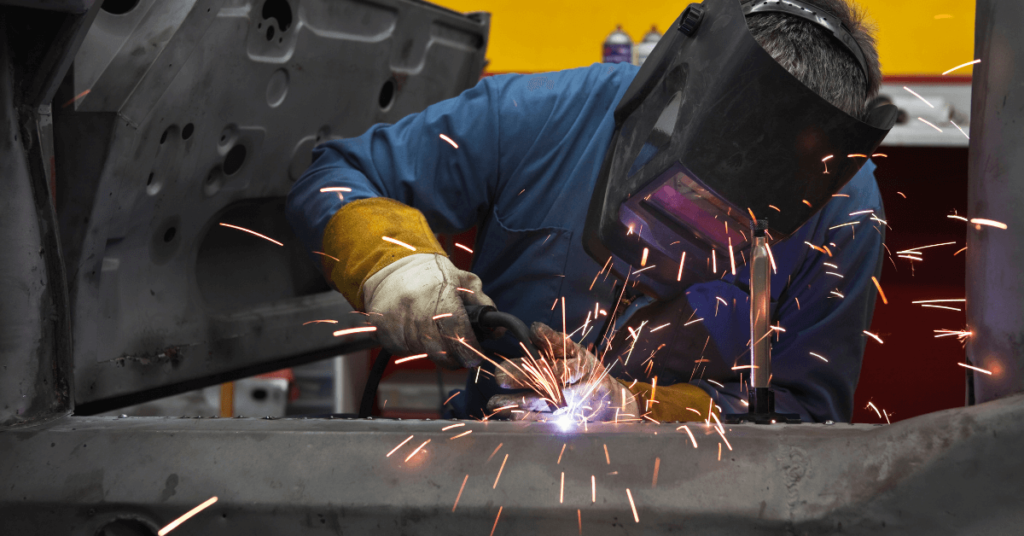
Common Welding Methods And Weld Defects In Shipbuilding Industry
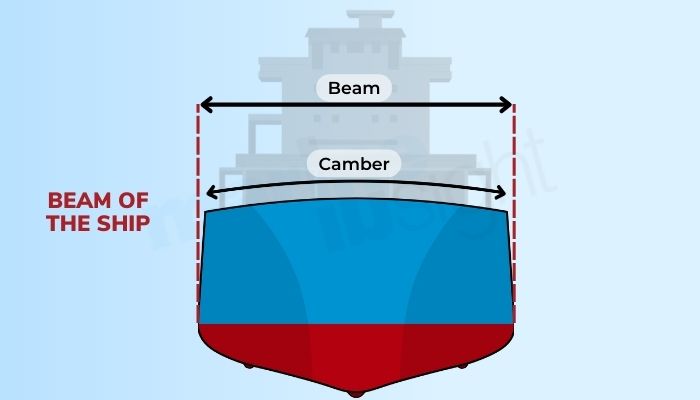
Understanding The Beam Of A Ship
Web Stories
Subscribe To Our Newsletters
By subscribing, you agree to our Privacy Policy and may receive occasional deal communications; you can unsubscribe anytime.

About Author
Subhodeep is a Naval Architecture and Ocean Engineering graduate. Interested in the intricacies of marine structures and goal-based design aspects, he is dedicated to sharing and propagation of common technical knowledge within this sector, which, at this very moment, requires a turnabout to flourish back to its old glory.
Leave a Reply
Your email address will not be published. Required fields are marked *
Subscribe to Marine Insight Daily Newsletter
" * " indicates required fields
Marine Engineering
Marine Engine Air Compressor Marine Boiler Oily Water Separator Marine Electrical Ship Generator Ship Stabilizer
Nautical Science
Mooring Bridge Watchkeeping Ship Manoeuvring Nautical Charts Anchoring Nautical Equipment Shipboard Guidelines
Explore
Free Maritime eBooks Premium Maritime eBooks Marine Safety Financial Planning Marine Careers Maritime Law Ship Dry Dock
Shipping News Maritime Reports Videos Maritime Piracy Offshore Safety Of Life At Sea (SOLAS) MARPOL

Do Sailing Yachts Have Engines? Here’s What You Need to Know
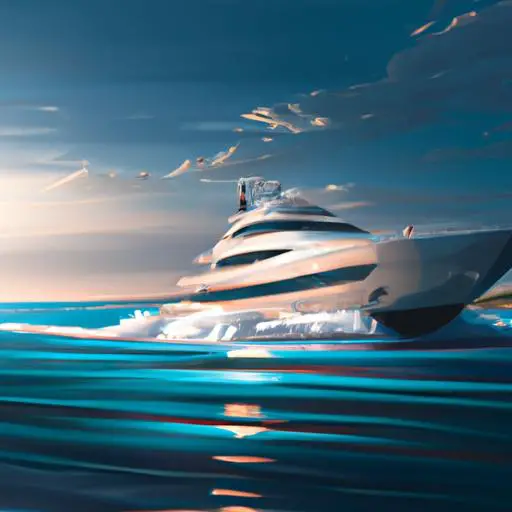
If you have ever dreamed of sailing the open seas, you may be wondering if a sailing yacht needs an engine.
An engine provides additional power and convenience, but it is not always necessary on a yacht.
In this article, we will explore the advantages and disadvantages of powering a yacht with an engine, the different types of engines available, and the steps needed to install and maintain an engine on a sailing yacht.
Read on to find out more about sailing yachts and engines.
Table of Contents
Short Answer
Yes, many sailing yachts do have engines.
The type and size of engine will depend on the size of the yacht, as well as its intended purpose.
The engine is usually used to help the yacht maneuver in and out of tight spaces or to provide extra power in bad weather or when the wind is not cooperating.
Some sailing yachts are even equipped with engines to allow them to travel at higher speeds when needed.
Do Yachts Have Engines?
The answer to the question of whether sailing yachts have engines is a resounding yes! In fact, many modern sailing yachts come equipped with an engine as standard, usually for backup purposes in the event of adverse wind or weather conditions.
Engines can also be used to help maneuver and dock a yacht, and to provide power for amenities such as air conditioning and refrigeration.
The type and size of engine for a sailing yacht will vary depending on the size and purpose of the yacht.
Smaller yachts may have an inboard or outboard motor, while larger yachts may be fitted with an inboard diesel engine.
The engine size will also depend on the size of the yacht and the type of sailing it will be doing.
In addition to being used as a backup in case of an emergency, engines can also be used to power a yacht while sailing, allowing the yacht to reach higher speeds and travel longer distances.
This is especially useful when sailing in areas with limited wind.
However, some sailors prefer to sail without using the engine and rely solely on the wind.
Ultimately, whether a sailing yacht has an engine or not is up to the individual sailor.
Some may prefer to sail without an engine, while others may find an engine to be a valuable tool in their sailing adventures.
Advantages of Having an Engine

Having an engine installed on your sailing yacht can be a great asset.
For one, it can provide a backup in case of adverse weather or winds, allowing you to continue your journey even if the wind dies down.
Additionally, an engine can provide power for amenities such as refrigeration, air conditioning, and lighting, making your sailing experience more comfortable and enjoyable.
An engine can also help you maneuver and dock your yacht more easily, and can be used to power the boat when sailing, allowing you to reach higher speeds and travel longer distances.
In short, having an engine installed on your yacht can provide a great deal of convenience and comfort.
Types of Engines for Yachts
When it comes to sailing yachts, there are a few different types of engines available to power them.
The most common engine type is an inboard engine, which is mounted inside the hull of the yacht and is connected to a propeller at the stern.
This type of engine is usually powered by diesel, although some yachts may also have gasoline engines.
Inboard engines are typically quieter and more fuel efficient than outboard engines, but they take up more space and require more maintenance.
Outboard engines are mounted on the outside of the hull and are connected to a propeller at the stern.
They are usually powered by gasoline and are typically less expensive and easier to maintain than inboard engines.
However, they are louder and less fuel efficient than inboard engines.
Outboard engines are also more vulnerable to damage from waves and other water conditions.
Some yachts may also have hybrid engines, which are a combination of inboard and outboard engines.
Hybrid engines allow for the benefits of both types of engines, providing more power and fuel efficiency than an outboard engine and more space and quieter operation than an inboard engine.
Finally, some yachts may be powered by electric motors.
Electric motors are powered by batteries, which can be recharged by the engine, shore power, solar panels, or wind turbines.
Electric motors are quieter and more fuel efficient than internal combustion engines, but they are limited in range and require a lot of maintenance.
Installing an Engine on a Yacht

Installing an engine on a yacht is not a requirement, but it is a great way to ensure that you can always get back to shore in case of adverse wind and weather conditions.
The type of engine you choose will depend on the size and type of yacht you have, as well as what type of sailing environment you plan to use it in.
For smaller vessels, an outboard motor may be all that is needed, while larger yachts may require an inboard engine.
When installing an engine, it is important to consider the power output needs, fuel capacity, and size of the engine, as well as any additional components such as a generator or propeller.
Additionally, it is a good idea to have a professional mechanic inspect and install the engine for your safety.
Maintenance of a Yacht Engine
When it comes to the maintenance of a sailing yachts engine, the importance of regular servicing and maintenance cannot be overstated.
Regular maintenance will ensure that the engine runs smoothly and efficiently, reducing the chances of breakdowns in the future.
It is recommended that an engine be serviced at least once a year, although this may vary depending on the type and age of the engine.
The servicing process typically includes changing the oil and oil filter, checking the spark plugs and air filter, and inspecting the fuel system for leaks or blockages.
The cooling system should also be inspected and the impeller should be replaced at regular intervals.
It is also important to check the engines drive belts and hoses, and to check the battery and charging system.
It is also important to keep the engine clean, as dirt and debris can accumulate over time and cause damage.
Regular cleaning will help to keep the engine running smoothly and to extend its life.
It is recommended that the engine be cleaned with a pressure washer at least once a year, and more often if the engine is used frequently.
Finally, it is important to keep the engines fuel tank topped up with clean fuel, as contaminated fuel can cause damage to the engine.
It is also important to check the fuel tank for water, as water can cause corrosion and damage to the fuel system.
By following these simple maintenance tips, the engine of a sailing yacht can be kept in good condition and will provide reliable and efficient power for years to come.
Pros and Cons of Powering a Yacht with an Engine

When it comes to powering a yacht with an engine, there are both pros and cons to consider.
On the one hand, it can make sailing more convenient and efficient, allowing for faster speeds and longer distances.
Additionally, it can provide a backup in case of adverse wind or weather conditions.
On the other hand, engines can be expensive to maintain and operate, and can be noisy, polluting the surrounding environment.
The pros and cons of powering a yacht with an engine will depend on the type of sailing you plan to do.
If you plan on sailing long distances or in challenging conditions, then an engine can be a useful and necessary addition.
However, if you are simply sailing for leisure and dont plan on going too far, then an engine may not be necessary.
One of the biggest advantages of powering a yacht with an engine is the increased speed and range.
An engine can help the yacht travel faster and farther than with just sails alone, allowing you to reach more destinations in less time.
Additionally, an engine can provide a backup in case of adverse wind or weather conditions, so you dont have to worry about getting stuck in the middle of the ocean.
On the downside, engines can be expensive to maintain and operate.
They require regular maintenance and fuel, and can be noisy and polluting.
Additionally, some sailing purists may see the addition of an engine as a way of cheating and taking away from the spirit of sailing.
Ultimately, the decision to power a yacht with an engine or not will depend on your specific needs and preferences.
If you plan on sailing long distances, or in challenging conditions, then an engine may be the best option.
However, if you dont plan on going too far and just want to enjoy a leisurely sail, then an engine may not be necessary.
Alternatives to an Engine
Though engines are a popular choice for sailing yachts, they are not the only option.
Many experienced sailors choose to power their yachts with alternative sources of energy, such as solar panels, wind turbines, and even human power.
Solar panels are often used to power smaller amenities, such as lighting and fan systems.
The panels can also be used to charge batteries, which can then be used to power larger yacht systems.
Solar power is an environmentally-friendly option, as it does not produce any emissions.
Wind turbines are also used to power sailing yachts.
The turbines capture the winds energy and convert it into electricity.
This electricity can then be used to power larger amenities, such as air conditioning and refrigeration.
Wind turbines have the benefit of being able to generate power even when the yacht is not in motion.
Finally, some sailors opt to use human power to power their yachts.
This can be done by pedaling on a stationary bike, or by using an oar or paddle.
Human-powered yachts are often used for short trips and racing, as they require a great deal of physical effort to operate.
Overall, sailing yachts can be powered by a variety of sources.
Though engines are the most popular choice, solar panels, wind turbines, and human power can all be used to provide power for a yacht.
Ultimately, the best source of power for a sailing yacht will depend on the size of the boat, its intended use, and the preferences of its captain.
Final Thoughts
In summary, sailing yachts can have engines to provide power for amenities, and to help maneuver the yacht in adverse wind or weather conditions.
Different types of engines can be installed on yachts, and they need to be properly maintained in order to ensure they are running properly.
However, there are alternatives to engines, such as motor sailing or using electric propulsion, that can also be used to power a yacht.
So if you’re considering adding an engine to your sailing yacht, you now have the information you need to make an informed decision.
James Frami
At the age of 15, he and four other friends from his neighborhood constructed their first boat. He has been sailing for almost 30 years and has a wealth of knowledge that he wants to share with others.
Recent Posts
Does Your Boat License Expire? Here's What You Need to Know
Are you a boat owner looking to stay up-to-date on your license requirements? If so, youve come to the right place! In this article, well cover everything you need to know about boat license...
How to Put Skins on Your Boat in Sea of Thieves? (Complete Guide)
There is a unique sense of pride and accomplishment when you show off a boat you customized to your exact specifications. With Sea of Thieves, you can customize your boat to make it look like your...
- What's My Car Worth?
- Buyer's Guide
Yamaha's Got a New 7600-RPM, 200-HP Four-Cylinder Engine
We'll take our new engine debuts where we can get them these days. Even if they're in boats.
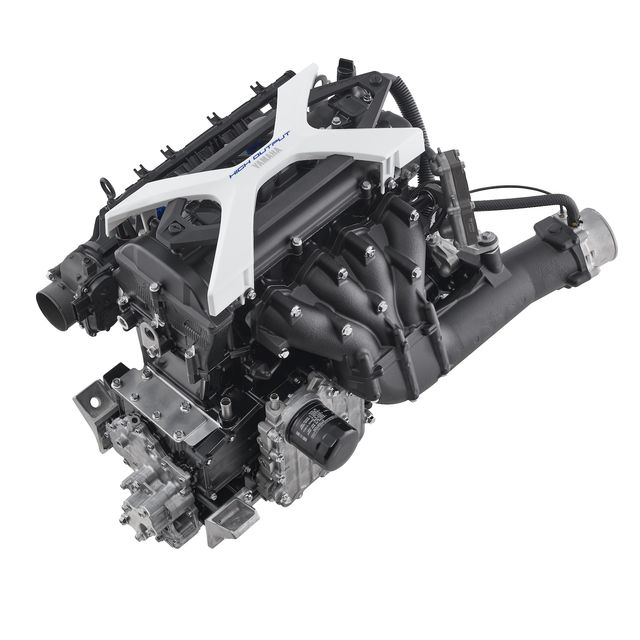
But the marine industry is a different story, and in recent years some of the coolest new engines— Mercury's V-12 , Honda's V-8 —were designed for boats. Which is also the case for Yamaha's new 1.9-liter four-cylinder, which makes 200 hp at 7600 rpm and can be found powering high-output WaveRunners and jet-drive boats. It's not designed for cars, but the Lemons racers among us can dare to dream.
The 1.9-liter four replaces Yamaha's 180-hp 1.8-liter mill and blurs the performance line between the company's naturally aspirated and supercharged engines. Yamaha's supercharged 1.8-liter makes 255 horsepower, but in a WaveRunner there's not a huge practical difference between the boosted 1.8 in a SVHO model and the naturally aspirated 1.9 that powers HOs. Personal-watercraft manufacturers adhere to an agreement that's something like the old German pact to limit top speeds to 155 mph, except on the water the target is 65 mph. That spec includes a 2-mph fudge factor, which naturally means that PWCs of sufficient horsepower top out at an electronically limited 67 mph. Since a 200-hp WaveRunner can hit that limit, the only difference is how quick you get there.

The 1.9-liter, as a new design, enjoys a bundle of changes aimed at durability and refinement. One example: There's an extra bolt connecting the cam chain housing to the block—a little tweak that makes a big difference. "The cam chain room is a thin aluminum casting," says Mark Sagers, senior watercraft factory service technical specialist (in other words, the guy who knows all the engines inside out). "That great big straight piece of aluminum is like a sound board, amplifying the noise of the cam chain. But if you run a fastener from that to the main casting, it knocks that noise way down. That's important when you're sitting right on top of the engine and it's bolted to a guitar body, basically."
Performance-enhancing upgrades include a new exhaust manifold with dedicated pipes for cylinders one and four, a bore increase from 86 mm to 88 mm, and a channel to route cooling water between the exhaust valves to cool the valve seats. The 1.9 even uses about a half-quart less oil than the 1.8, because Yamaha determined that it could cut windage losses (read: increase horsepower) without sacrificing durability. And durability versus performance is always a tradeoff, whether on land or not. "In a 250-cc motocross bike, the maintenance schedule calls for a new piston every nine hours and it's putting out specific power like a NASCAR engine, or almost Indy," says Sagers. "Boats are more on the lower end of high performance, so we can make them last thousands of hours."
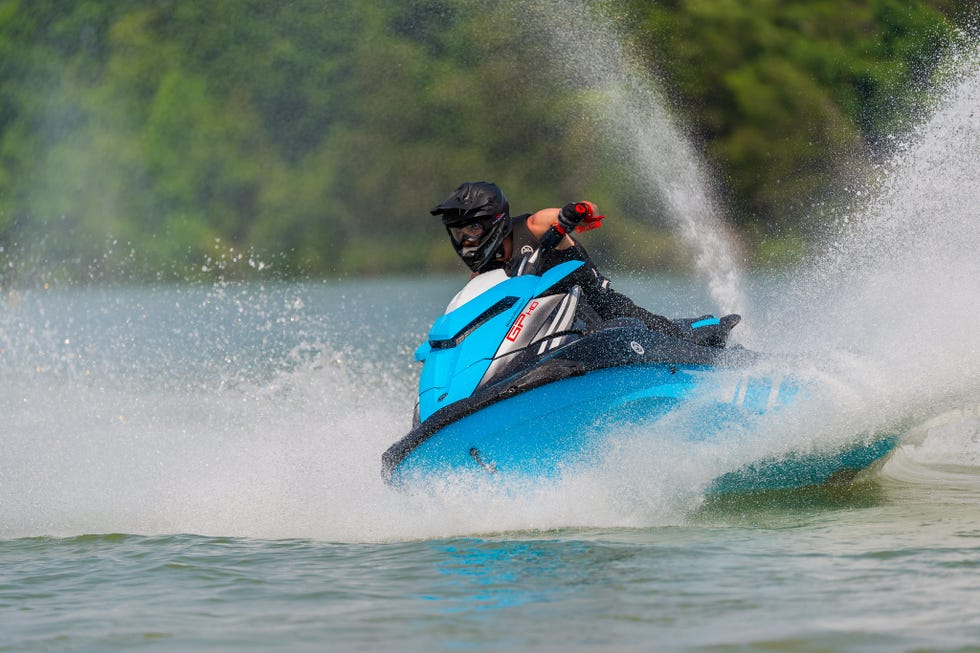
A car engine might well make its horsepower peak beyond 7000 rpm, but it isn't expected to spend much time there. An engine destined for a WaveRunner is a different story. "A lot of the durability testing is done fully loaded at wide open throttle," Sagers says. "These will run a very long time at WOT. Waverunners are often idling or WOT, and there's no middle ground. But I've seen Waverunner engines with more than 1500 hours and no major mechanical work. It's staggering that these mechanical things can live through this."
Still, 200 hp isn't enough for everyone. Logically, it would seem inevitable that this engine will get a supercharger and the 1.8-liter will be retired. Boost prognosticators might find a clue at the 1.9-liter's Coast Guard–mandated intake flame arrester—the intake manifold is cast around it so it can't be sucked into the engine. Which is the kind of thing that would probably only happen if said intake was huffing some major boost. Perhaps soon, it will be.
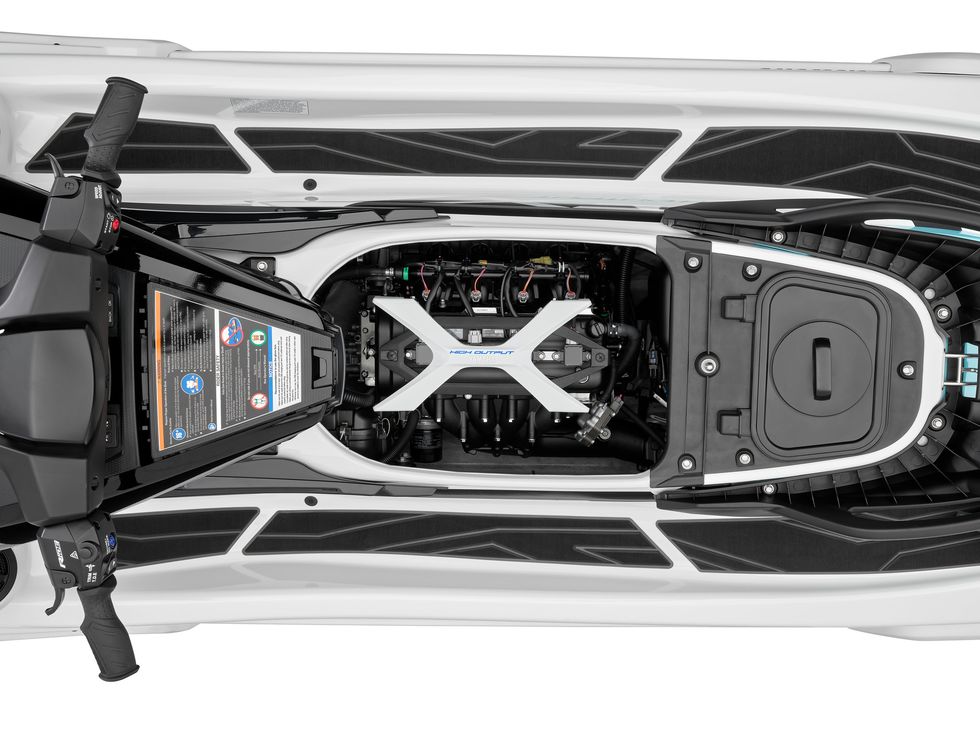
In the meantime, you can break the 200-hp barrier without forced induction. And for twin-engine boats, that means Yamaha is packing 400 horsepower into some of its 22-footers, which we imagine would mean 50-plus-mph top speeds given that the 210 FSH hit 48.0 mph with the 1.8s and their 360 total horsepower.
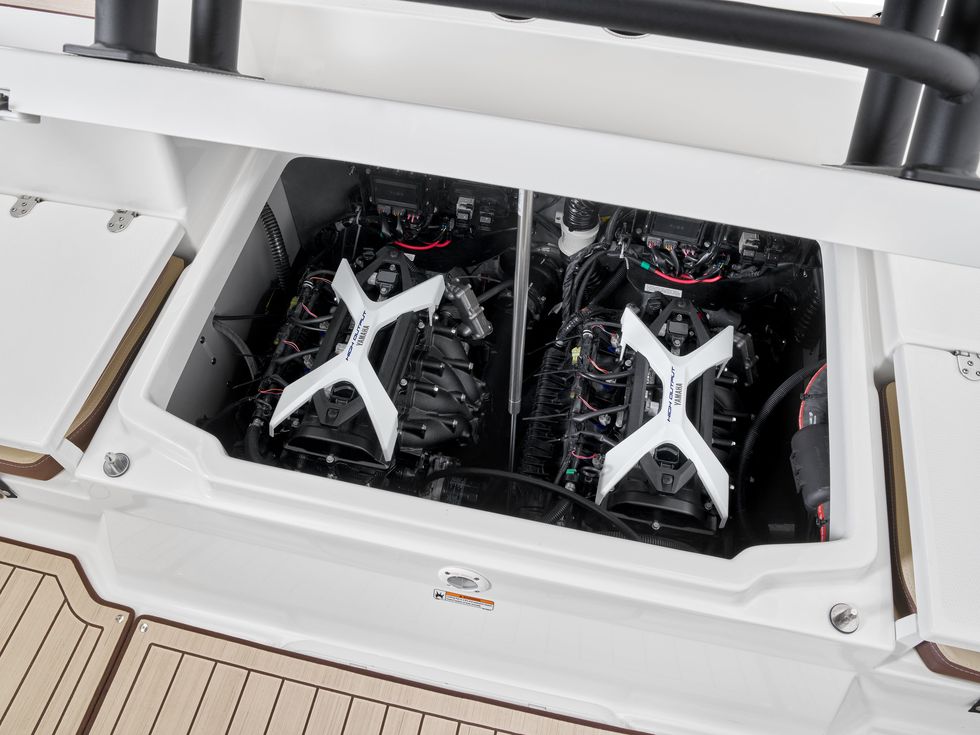
Yamaha has built some nice automotive engines—most famously, the Ford Taurus SHO's —but those of us dreaming of 200-hp Yamaha-powered Miatas will probably have to wait a while for these latest ones to hit the salvage yards. (You can spend that interim figuring out how to adapt a closed-loop cooling system, since the jet drive on these engines doubles as a water pump.)
Calling a powerplant a "boat motor" is traditionally a pejorative, meaning a low-revving hunk of iron, an outdated castoff better suited as a mooring. But motors are electric, and that's where things are heading on the highways. So if you appreciate the mechanical complexity and cleverness of engines, boats are the new—and maybe last—frontier.
Ezra Dyer is a Car and Driver senior editor and columnist. He's now based in North Carolina but still remembers how to turn right. He owns a 2009 GEM e4 and once drove 206 mph. Those facts are mutually exclusive.

.css-190qir1:before{background-color:#000000;color:#fff;left:0;width:50%;border:0 solid transparent;bottom:48%;height:0.125rem;content:'';position:absolute;z-index:-10;} News .css-188buow:after{background-color:#000000;color:#fff;right:0;width:50%;border:0 solid transparent;bottom:48%;height:0.125rem;content:'';position:absolute;z-index:-10;}
Ford Planning $25,000 Compact EV for 2026: Report
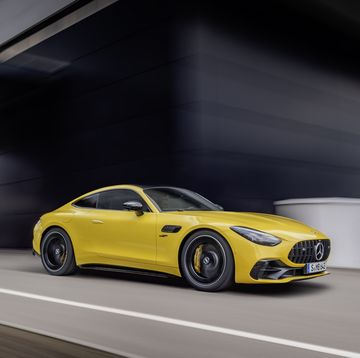
New AMG GT43 Coupe Has 416-HP Turbo Four and RWD
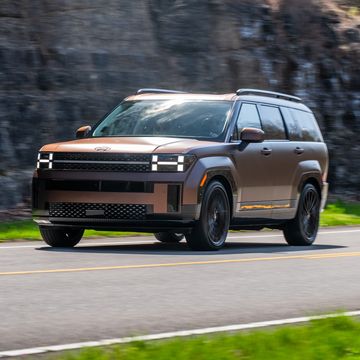
The 2024 Hyundai Santa Fe's Most Notable Features

Hertz CEO Resigns after Buying 100,000 Teslas

2024 Hyundai Santa Fe Has Lots More Cargo Space
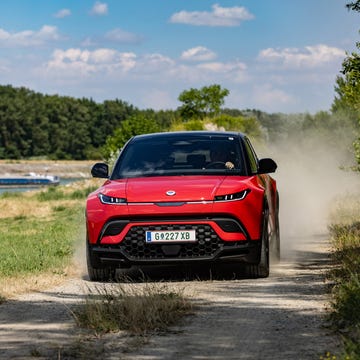
Fisker Pauses Production for Six Weeks
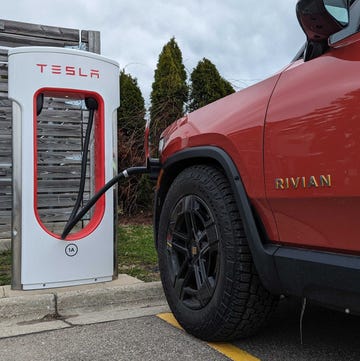
Rivian Models Can Now Use Tesla's Superchargers
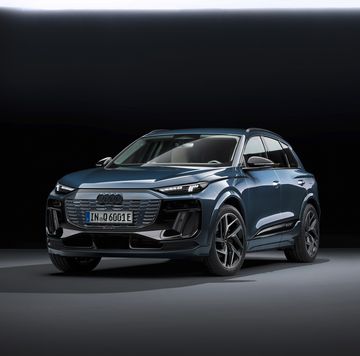
2025 Q6 and SQ6 e-tron Advance Audi’s EV Game
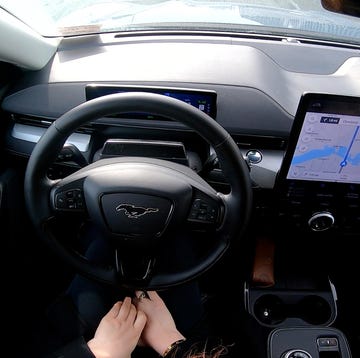
Ford BlueCruise Is the Subject of a Federal Probe
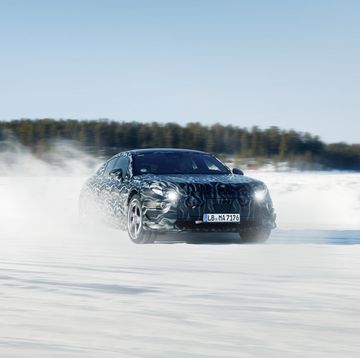
2026 Mercedes-AMG EV Teased While Snow Testing
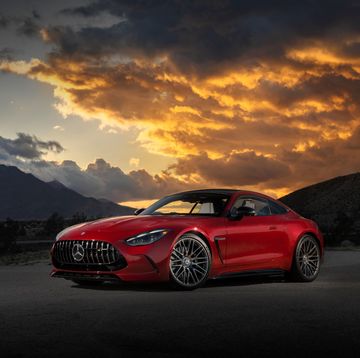
2024 Mercedes-AMG GT Starts at $136,050
Please Enter Your ZIP Code
Please enter a valid ZIP Code
We can’t determine your current location. Please enter a valid ZIP Code.
Use my current location
Are you sure?
Your ZIP Code helps us search inventory at dealers near you.
Are you sure you want to change your vehicle? You will loose any customization to your vehicle
2024 Pilot Features & Specs
Select a trim to compare

IMAGES
VIDEO
COMMENTS
Most modern yachts utilize a reciprocating diesel engine as their prime power source. Due to their operating simplicity, robustness, and fuel economy. Compared to most other prime mover mechanisms. The rotating crankshaft can be directly coupled to the propeller with slow speed engines. Or via a reduction gearbox for medium and high-speed engines.
Sterndrives utilize an engine that is mounted on the inside of the hull for power. They're attached through the transom to a drive unit that resembles the lower gearcase portion of an outboard. Like outboard engines, this drive unit is used to steer the boat. Sterndrives turn like outboard engines to direct the propeller and turn the boat.
4-Stroke Marine Diesel Engine System. Most modern larger merchant ships use either slow speed, two stroke, crosshead engines, or medium speed, four stroke, trunk engines. Some smaller vessels may use high speed diesel engines. The size of the different types of engines is an important factor in selecting what will be installed in a new ship.
Engine Types Explained by Fly Yachts is your go-to resource for demystifying the range of engines powering today's luxury vessels. Dive into the world of inboard motors, favored for their balance and lower center of gravity, and explore the robust nature of diesel engines, celebrated for their longevity and fuel efficiency. Contrast these with the sleek outboard engines, noted for their ease ...
The different engine types for super yachts include MTU, MAN, Caterpillar, SEMT Pielstick and Wärtsilä, powering some of the largest yachts in the world. ... Caterpillar offers a wide variety of yacht engines such as the series C12, C18, C32, 3512C as well as VM32C with a performance range between 500 to 8000 KW and 660 to 11000 HP.
1. Diesel Propulsion. Diesel propulsion system is the most commonly used marine propulsion system converting mechanical energy from thermal forces. Diesel propulsion systems are mainly used in almost all types of vessels along with small boats and recreational vessels. 2. Wind Propulsion.
Gasoline yacht engines are quieter than other types, for peaceful boating and better conversations. Environmentally-friendly. Choose modern gasoline yacht engines that are designed to limit emissions. Plus, look out for extra features, like electronic fuel injection or multi-port fuel injectors. These enhancements improve performance and save fuel.
A shaft-driven engine is the simplest type of a marine stationary engine. The motor is installed at midships (direct drive) or in the stern of the boat (V-drive). It is not only a question of the layout, but also of the shaft design. «In both cases a shaft rotating around its axis» (the shaft itself) moves away from the boat transom.
Types of yacht engine. As Jean-Francois Conso from CONSO points out, "There are many engines ranging from six cylinder to 16 cylinder. There are also many brands, from MAN and MTU to Cummins, Deutz, Cat and Baudoin; however the most popular are MTU and Cat. These tend to be seen on board yachts ranging from 80ft to 80m long.
Different Types Of Engines On Motor Yachts. Motor yachts are powered by inboard engines, powered by gasoline or diesel. Some newer models come with pod drives, a marine propulsion system where the gearbox and drive are mounted beneath the boat in the water. Some boat buyers prefer to choose a high-performance model while others will pick a more ...
There are 3 types of boat engines used to propel powered boats including inboard, outboard and stern drive. Learn more about the differences between each. ... With an outboard engine, the boat is steered by moving the entire engine. This is accomplished by either turning a handle attached to the engine itself or by using a steering wheel, which ...
Marine Engines and Power Systems: The Basics Behind What Powers Your Powerboat. Outboard engines, inboards, pod drives, jets, V drives, diesel, and gas—we'll help you understand all the types of motorboat engines on the water. Boat engines take many shapes, sizes, and forms, ranging from the common outboard to rarely seen surface drive ...
Inboard engines are four-stroke automotive engines that have been modified for use on the water. These engines power a drive shaft that is connected to a propeller. Unlike an outboard, an inboard engine does not also steer the boat. Instead, inboards have a rudder or rudders that are located behind the propeller and controlled by a steering wheel.
Additionally, this type of boat engine can tilt up, allowing boats to navigate in shallow waters without damaging the propeller or the engine itself. If you want a powerful engine but wish to maintain sustainability when out boating, ask about our Cox Marine diesel engine. With a V8 engine, this diesel-powered outboard engine combines high ...
Outboard, inboard, sterndrive, and jet drive are the four types of marine engines that will be covered in this article. Multico Prime Power, Inc. (MPPI), a leading heavy equipment supplier in the Philippines, understand the essential roles of these engines and would like to help boaters choose the best marine engine for their aquatic excursions ...
We will explain the different types of marine diesel engines based on the following aspects: Type of use. Number of strokes. Single-acting or double-acting. Type of ignition. Single or multi-cylinder. Piston type. Arrangement pattern of the cylinders.
Marine engine types. When it comes to powering boats, there are a few main types of marine engines: outboard, inboard, stern and jet drive engines, plus pod drives. While some people just need their water vehicle to take them on occasional leisure jaunts, others need an engine suited for the thrills of water sports or more serious fishing trips
30-70+ feet. Sailing yachts are graceful and use wind power. Motor yachts are speedy and powered by engines. Catamarans stand out with their steadiness and roominess - great for a leisurely cruise. Trawler yachts are great for long-distance trips because they're fuel-efficient and have comfy living areas.
Engine Types and Configurations. Motor yachts rely on a variety of engine types and configurations to achieve desired performance levels. Common options include: Inboard Engines: Positioned within the hull, inboard engines offer better balance and are typically used for larger yachts.
Figure 1: Typical Configuration of a single mast sailboat. Motor Yachts: After the Industrial revolution, yachts, in tandem with other vessels, incorporated engines for their propulsion. Coal-fired steam engines used both fire-tube and water-tube boilers. Over the years, steam engines became superseded by modern fuel-powered combustion engines.
Today MTU is one of the most preferred engine manufacturer for yachts of any type - standard yachts, performance yachts, displacement yachts and large luxury and mega yachts. Currently, MTU offers the following series of engines - Series 60, 1600, 2000, 1163 and 8000, which have different model designed to suit yacht and yacht owner's needs.
Types of Engines for Yachts. When it comes to sailing yachts, there are a few different types of engines available to power them. The most common engine type is an inboard engine, which is mounted inside the hull of the yacht and is connected to a propeller at the stern.
Different Types of Boat Engines Outboard Engines. Outboard engines are a popular choice for many boaters due to their versatility and ease of use. These engines are typically attached to the transom of the boat and are easily removable, making them convenient for storage and maintenance. Outboard engines come in various sizes and horsepower ...
But the marine industry is a different story, and in recent years some of the coolest new engines—Mercury's V-12, Honda's V-8—were designed for boats. Which is also the case for Yamaha's new 1 ...
Engine Type: V6. V6. V6. V6. V6. V6. Displacement: 3471 cc. 3471 cc. 3471 cc. 3471 cc. 3471 cc. 3471 cc. Horsepower (SAE net)* 285 hp @ 6100 rpm. 285 hp @ 6100 rpm. 285 hp @ 6100 rpm. ... Active Control Engine Mount System (ACM) Active Noise Cancellation™ (ANC) Hill Descent Control: Hill Start Assist: Direct ignition System with Immobilizer ...